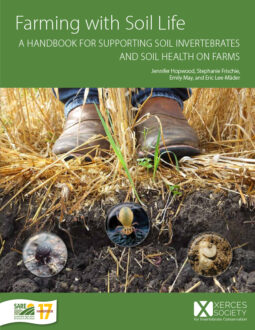INSECTS: CLASS INSECTA includes a great number of insect orders that dwell in the soil for all or a portion of their life cycle or that are involved in soil food webs, including all of the most diverse groups (e.g., beetles, flies, bees, wasps, ants, butterflies and moths). These insects are important predators, root feeders, modifiers of soil structure or decomposers.
Silverfish
PHYLUM: Arthropoda » CLASS: Insecta » ORDER: Zygentoma
SIZE: 0.39–0.59" (10–15 mm).
ECOLOGICAL ROLE: Silverfish are decomposers, but the extent of their ecological role is not fully understood.
DESCRIPTION: Silverfish are wingless, with flat, wide bodies covered in silvery scales. They are brown or gray in color. Eyes are small or absent, but they have long antennae and long, taillike appendages.
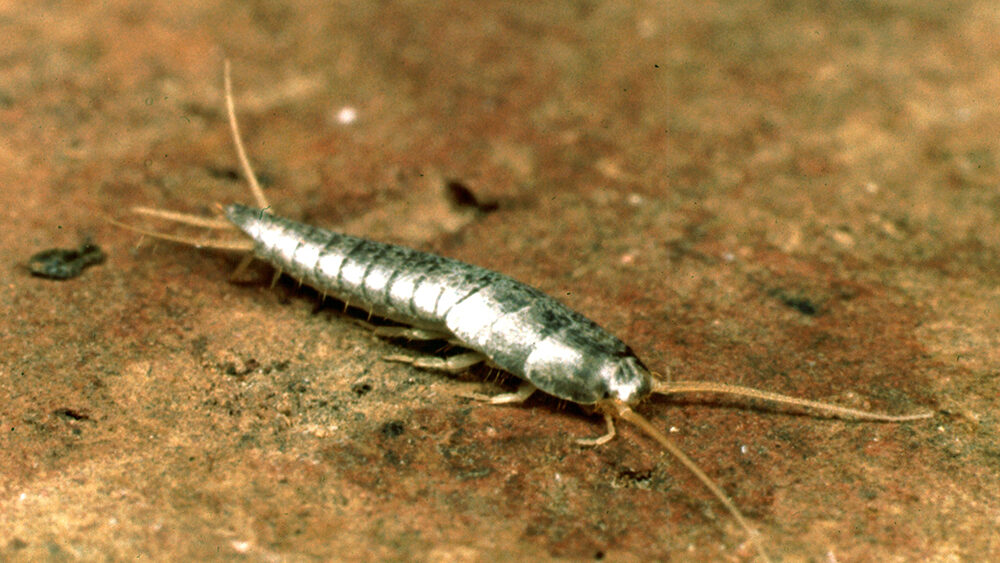
WHERE THEY ARE FOUND: Silverfish live in leaf litter, under stones or underground in mammal burrows and ant and termite nests; they also can live in buildings.
WHAT THEY EAT: Silverfish eat decaying vegetation and starchy substances.
LIFE CYCLE: These insects have simple metamorphosis without much noticeable change between molts. They have life spans of two to four years and have complex courtship routines.
APPROX. NUMBER OF KNOWN SPECIES: 370 worldwide (18 in North America).
RELATIVE ABUNDANCE: Silverfish are sensitive to moisture and are not abundant if humidity is low.
NOTES OF INTEREST:
- These insects are rapid runners.
- Some species that live inside dwellings eat book bindings, wallpaper paste, clothing and more.
- Silverfish have water-absorbing vesicles on their underside for quick uptake of water from their environment.
Cockroaches
PHYLUM: Arthropoda » CLASS: Insecta » ORDER: Blattodea » FAMILIES: Blaberidae, Blattidae, Ectobiidae
SIZE: 0.12–1.97" (3–50 mm).
ECOLOGICAL ROLE: Cockroaches are decomposers and scavengers in leaf litter and on the soil surface.
DESCRIPTION: Soil-dwelling cockroaches are adapted to life in leaf litter, with their brown-and-black flattened, oval bodies; a head that is concealed by their thorax; and legs that can be tucked in close. Their threadlike antennae are very long—at least half as long (but typically nearly as long as) their bodies. Stout, bristled taillike appendages called cerci help them detect slight movements nearby.
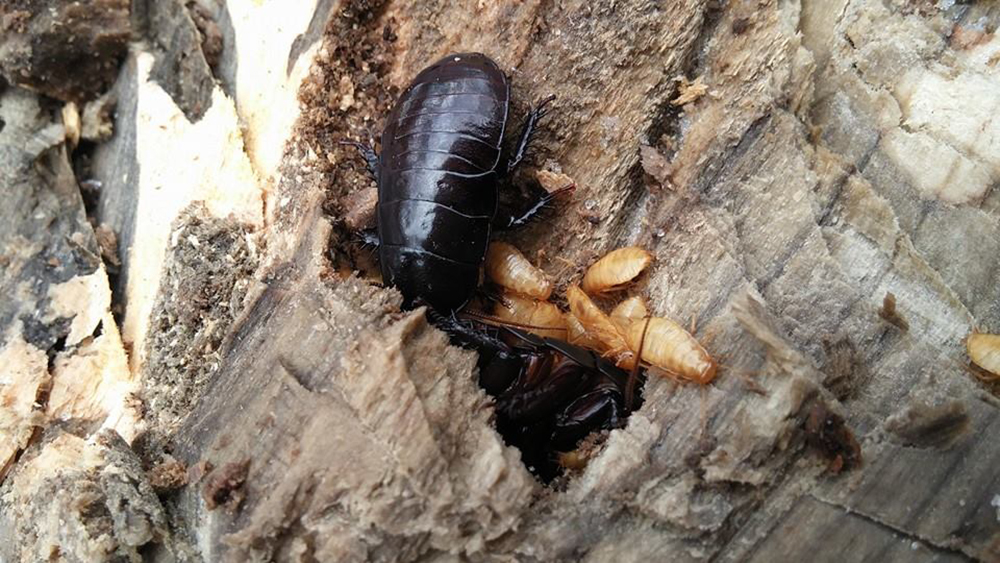
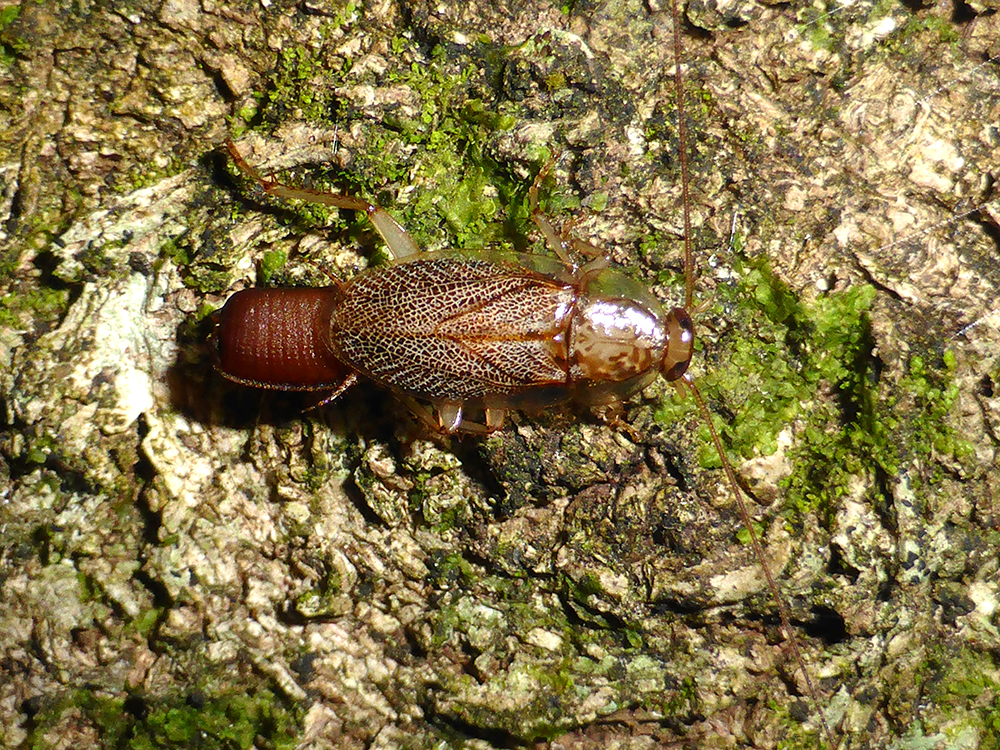
WHERE THEY ARE FOUND: Soil-dwelling cockroaches are found in the upper soil layer and litter layer, and under logs.
WHAT THEY EAT: Cockroaches are omnivorous, feeding on rotting plants and detritus. They are mainly nocturnal.
LIFE CYCLE: Cockroaches enclose eggs in a capsule, called an ootheca, which is either carried by the female or left in litter. Nymphal development ranges from several months to more than a year, and adults can be long-lived, up to four years or more.
APPROX. NUMBER OF KNOWN SPECIES: 4,500 worldwide (50 in the United States).
RELATIVE ABUNDANCE: Cockroaches have relatively low population densities.
NOTES OF INTEREST:
- Their antennae have tactile and olfactory receptors, as well as humidity and temperature receptors. When they are exploring, they move their antennae in continuous, circular movements to help them detect things in the near vicinity.
- Cockroaches of the genus Cryptocercus feed on wood within decaying logs and have internal mutualistic microbes that help them break down cellulose. Mated pairs of cockroaches live within their logs providing care for up to 20 nymphs. Raising brood together over several years, the parental care that males and females provide together for offspring is unusual for insects. In the United States, four species of Cryptocercus are found in eastern states and one species is found in the West.
- Attaphila cockroaches, found in the United States only in Texas and Louisiana, live within nests of leaf-cutter ants (Atta) and eat the fungus cultivated on leaf tissue chewed by the ants.
- Cockroaches play a more minor role in soil biology since they are typically in low population densities.
Termites
PHYLUM: Arthropoda » CLASS: Insecta » ORDER: Blattodea » FAMILIES: Kalotermitidae, Rhinotermitidae, Termitida
SIZE: 0.08–0.8" (2–20 mm).
ECOLOGICAL ROLE: As major ecosystem engineers and decomposers that transform soil structure and clean up plant litter, termites are among the most important soil fauna. Their work recycles wood and plants, and aerates and enriches soils with nutrients.
DESCRIPTION: Termites have soft bodies that are usually light in color. Their abdomen is broadly joined to the thorax, and they have a broad head with simple threadlike antennae. Their role in the colony determines their appearance: Reproductive individuals have eyes and wings, queens tend to have very large abdomens, and shed their wings after swarming to establish a new colony. Most workers and soldiers are blind and have chewing mouthparts. Soldiers have larger, dark, hard heads with powerful mandibles used in defense.
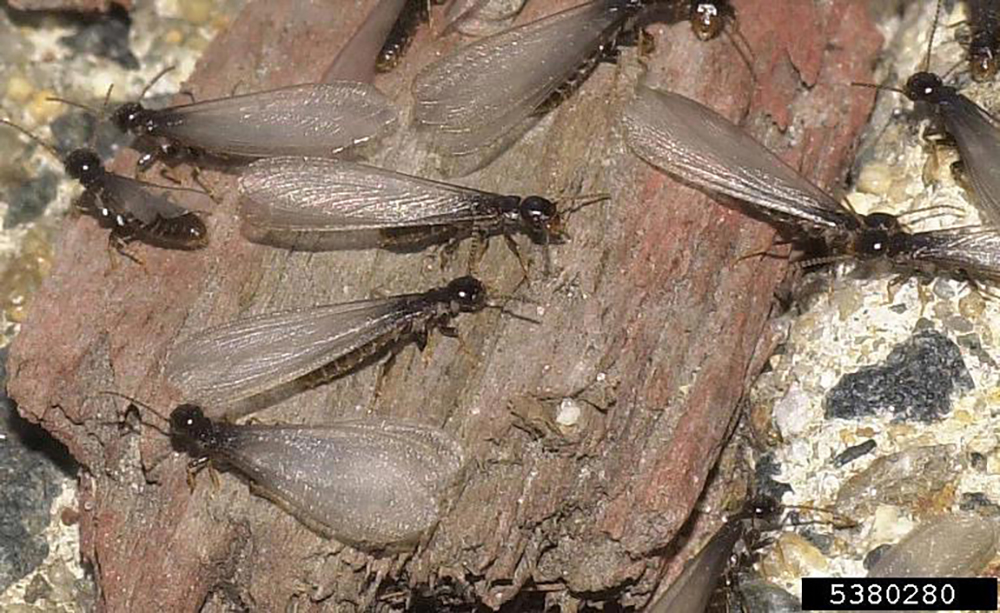
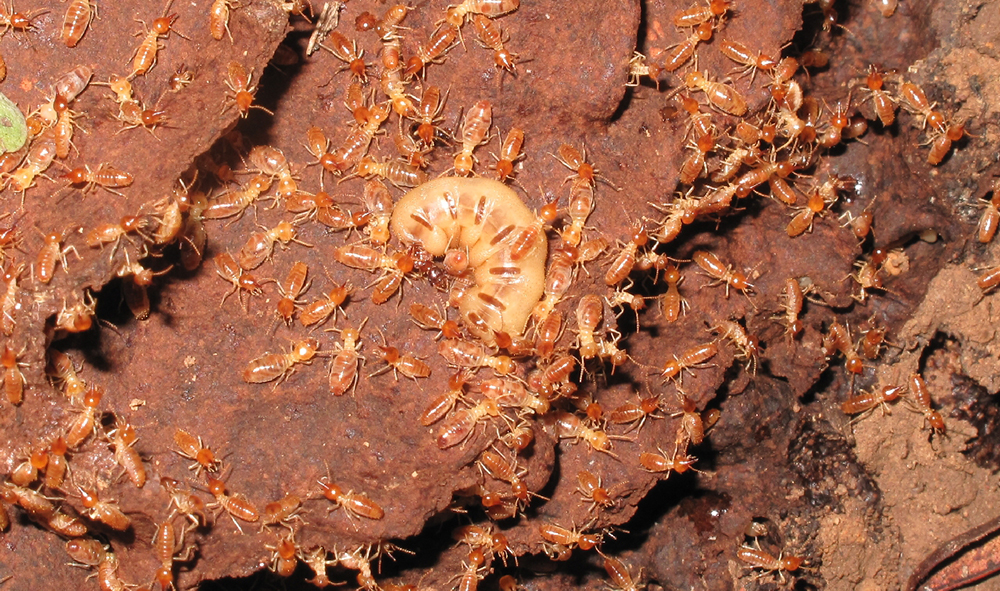
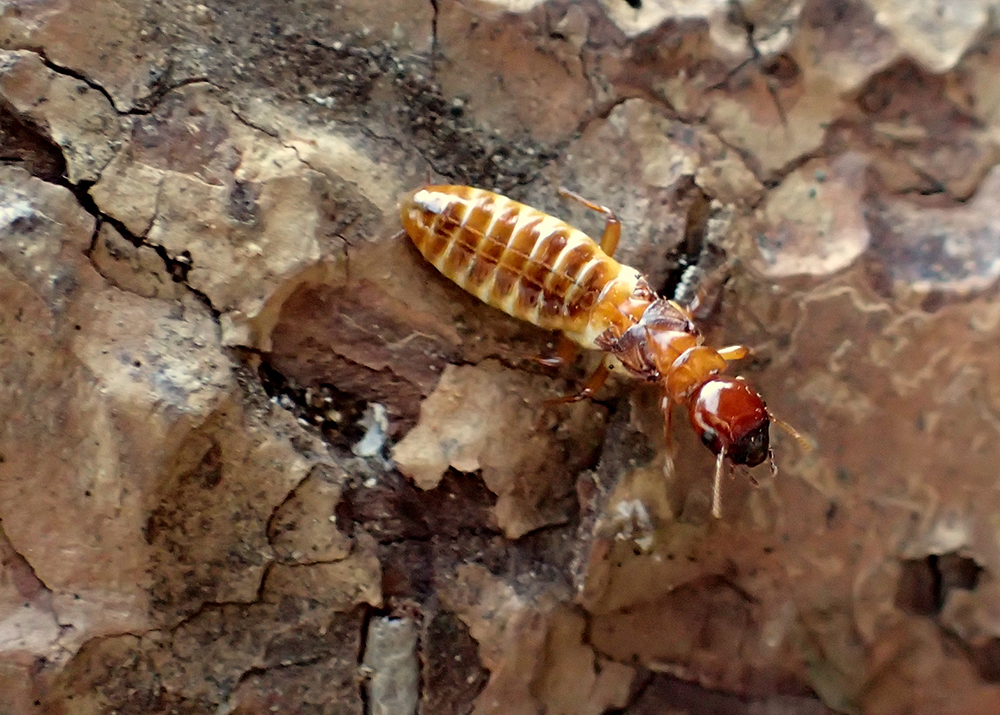
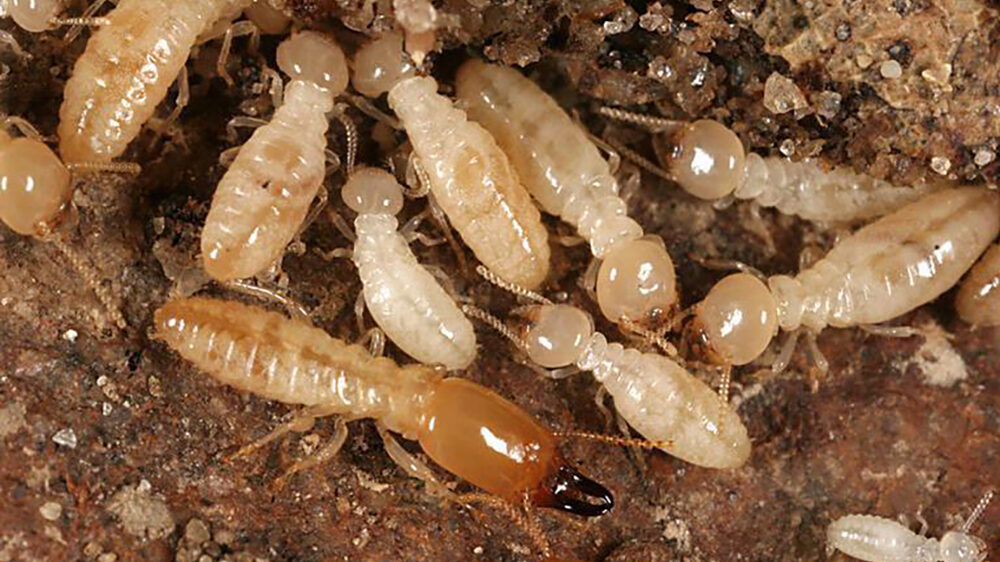
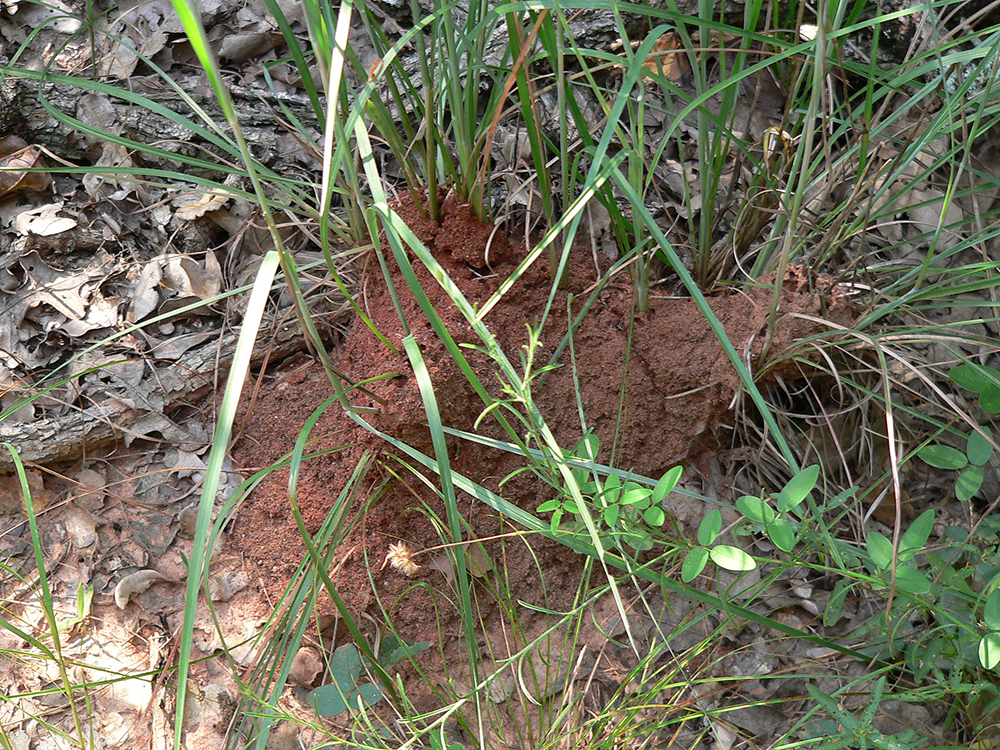
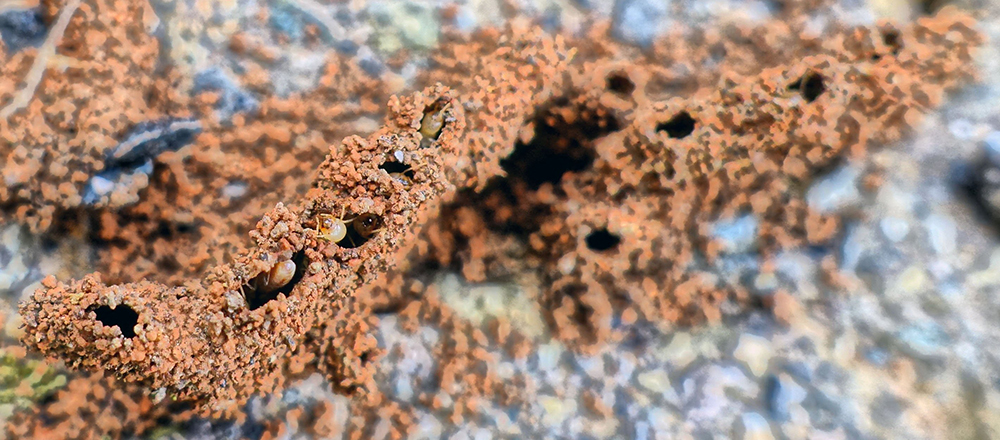
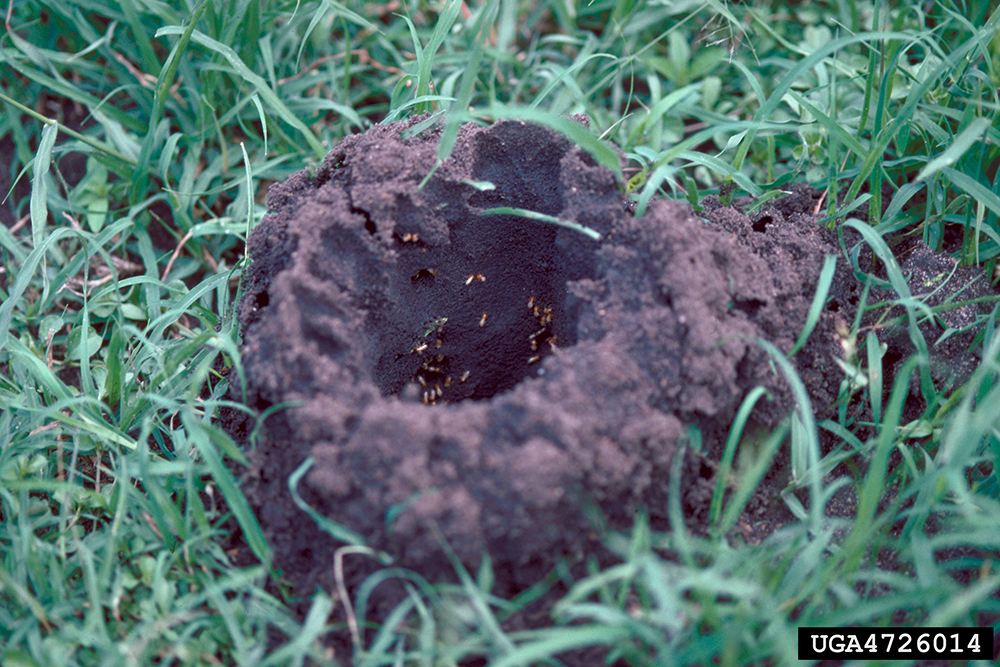
WHERE THEY ARE FOUND: Termites live in highl organized colonies in the soil and within dead wood.
WHAT THEY EAT: Termites feed on some of the least nutritious and indigestible foods: decaying plant material. They must eat huge quantities of leaf litter, grass, dead wood and twigs in order to survive. Microbes in their guts help termites digest cellulose; these microbes are shared through the transfer of regurgitated liquids and through feeding on droppings of fellow termites.
LIFE CYCLE: Termite colonies are established by one king and queen that initiate reproduction. Queens can be long-lived—up to 15 years or more—and once colonies reach a certain size, queens can lay 1,000 to 3,000 eggs per day. In the early stages of colony formation, kings and queens rear workers, feeding them predigested food until they can feed themselves. Younger nymphs and workers then take over rearing and other duties. Workers go on to construct galleries and forage for food, while soldiers defend the colony. Workers and soldiers can live up to four years. Reproductive individuals disperse from established colonies to colonize new locations.
APPROX. NUMBER OF KNOWN SPECIES: 3,000 worldwide (47 in the United States).
RELATIVE ABUNDANCE: Termites are found in large numbers in warmer parts of the world and are at their highest densities in tropical rainforests, where there can be 10,000 per square meter.
NOTES OF INTEREST:
- Termites can communicate with each other through tactile signals and with pheromones.
- Termites are “social cockroaches.” Though their social system resembles that of ants (termites have been popularly referred to as “white ants”), termites are closely related to cockroaches.
- In the United States, a few termite species are considered structural pests or pests of timber.
- In grasslands of Arizona, termites clear up to 92% of the plant litter, which works out to about 400 lb. (181 kg) of plant material per acre of ground.
- A number of arthropods occur in termite nests: mites, ants, springtails, beetles and centipedes all share space with termites.
- In Africa, South America and Australia, some species build large mounds in the shape of pyramids or turrets. Thirty mounds may occupy one acre, and 5,000 tons of soil may be moved during the construction of those mounds, an astounding amount for such small animals.
- In the tropics, termites cultivate fungi on their droppings and consume those fungi.
- Termites are an important food source for a variety of birds and mammals.
- Queen termites have the longest lifespans of insects, with queens living beyond 20 years.
- The distribution and diversity of termites is greatest in the southern hemisphere.
Earwigs
PHYLUM: Arthropoda » CLASS: Insecta » ORDER: Dermaptera » FAMILIES: Forficulidae, Labiduridae
SIZE: 0.24–0.8" (6–20 mm).
ECOLOGICAL ROLE: In food webs, earwigs are decomposers, herbivores and predators, and they move and mix soil when they burrow.
DESCRIPTION: Earwigs have a slender and elongated body that is smooth and leathery. They lack simple eyes, called ocelli, and some species also lack compound eyes. Earwigs can be winged or wingless. They have particularly hardened, pincer- or forceps-like sensory appendages, called cerci, which are used in defense, prey capture and courtship. In earwigs with wings, the front wings are short and leathery, and they do not fully cover the hind wings or abdomen (similar in that respect to rove beetles).
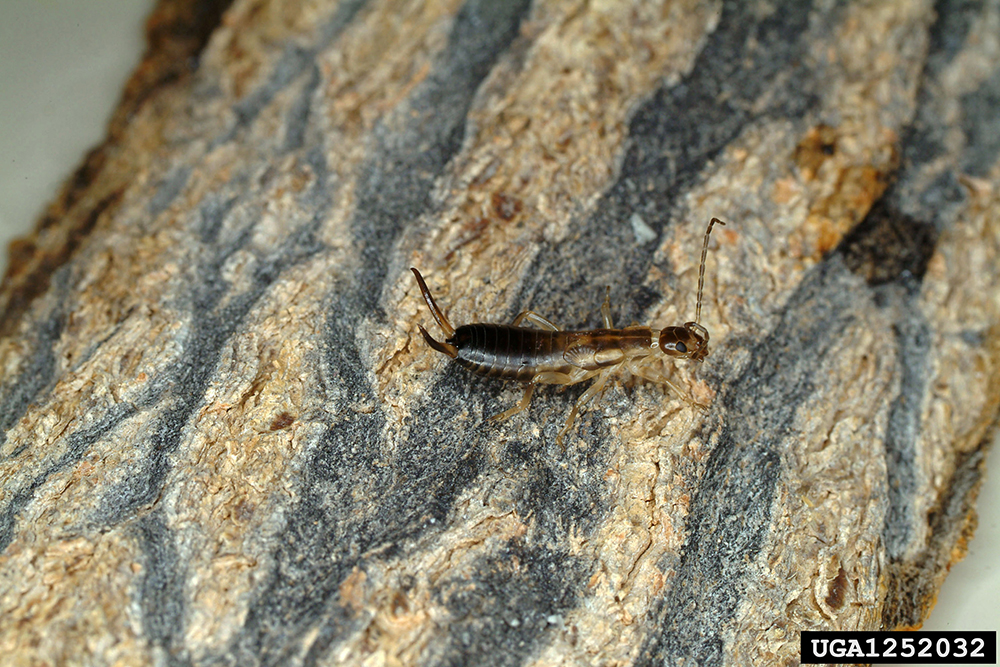
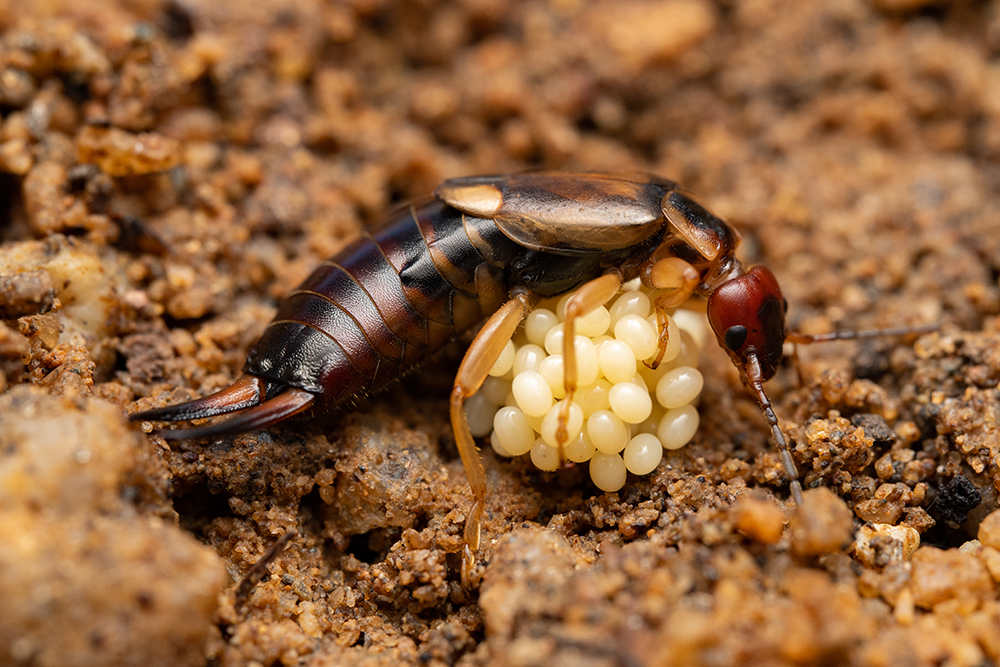
WHERE THEY ARE FOUND: Earwigs are active at night in leaf litter, and they hide during the day in cracks and crevices and under bark and debris.
WHAT THEY EAT: Earwigs in the family Forficulidae feed on dead and decaying plants and occasionally living plants, fungi, algae, moss, lichen and small insects like aphids. Those in Labiduridae hunt and eat other arthropods, including caterpillars and spiders.
LIFE CYCLE: Nymphs and adults are found in the same habitat; females protect their eggs and young nymphs within burrows for a few weeks. Nymphs go through four to five molts before reaching adulthood, and earwigs overwinter as adults.
APPROX. NUMBER OF KNOWN SPECIES: 1,800 worldwide (27 in North America).
RELATIVE ABUNDANCE: Native species are not very abundant in the United States, where the most abundant, commonly seen earwig is the European earwig (Forficula auricularia), a species introduced from Europe around 1910 and which can be seen on flowers, garden vegetables and more.
NOTES OF INTEREST:
- Native earwig species are not very abundant in the United States and the the most commonly seen earwig is the European earwig, introduced species that may be a pest in some fruit crop systems.
- When disturbed, earwigs respond by trying to wedge deeper into the soil, looking to get as much direct contact of their body with the substrate.
- Mothers become cannibalistic a few weeks into providing care for their young.
- Some species have glands on their abdomen from which they emit stinky fluid to deter predators.
- Their common name is derived from meritless folklore about these insects entering people’s ears.
- Earwigs do not bite but can pinch using their cerci.
- The European earwig can cause damage to plants at high population levels, particularly to seedlings and soft fruits (e.g., raspberries).
Webspinners
PHYLUM: Arthropoda » CLASS: Insecta » ORDER: Embioptera, also known as Embiidina
SIZE: 0.08–0.87" (2–22 mm).
ECOLOGICAL ROLE: Webspinners may contribute to decomposition.
DESCRIPTION: Webspinners have beaded antennae and slender, elongated brown bodies. Their front legs are swollen in appearance and house silk glands used to make silken galleries. Males have wings but females do not.
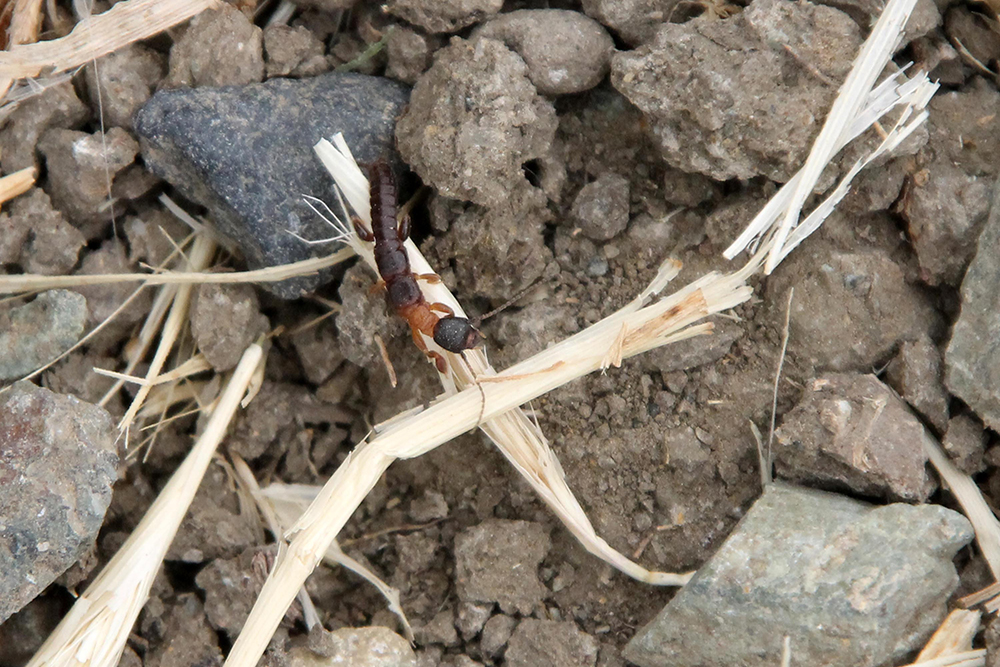
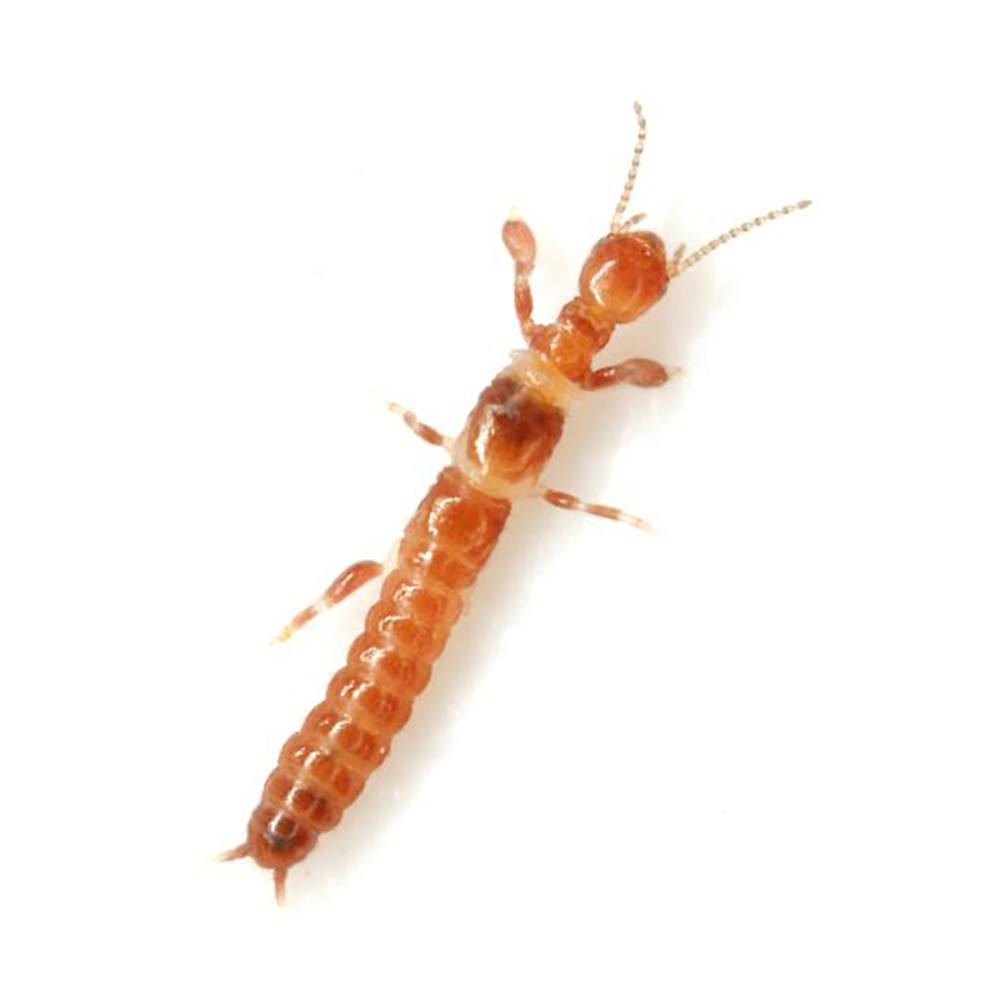
WHERE THEY ARE FOUND: Webspinners live in silken galleries under grass roots, bark, or stones. Males can be seen near artificial lights at night. These insects are found only in warm regions, and they are less common or absent in the northern half of the United States.
WHAT THEY EAT: Adult and juvenile webspinners consume dead plant material as well as lichens and moss.
LIFE CYCLE: These insects live in maternal groups within their galleries, and females provide some care for their young. They have only one generation per year.
APPROX. NUMBER OF KNOWN SPECIES:380 worldwide (11 in North America).
RELATIVE ABUNDANCE: These insects are uncommon.
NOTES OF INTEREST:
- Male webspinners often move backward within galleries to avoid friction with their wings, which they fold forward.
- Female webspinners do not disperse very far since they do not fly.
Grasshoppers
PHYLUM: Arthropoda » CLASS: Insecta » ORDER: Orthoptera » FAMILY: Acrididae
SIZE: 0.2–4.5" (5–115 mm).
ECOLOGICAL ROLE: Grasshoppers are herbivores and lay their eggs in soil.
DESCRIPTION: Grasshoppers have antennae shorter than their body. They have powerful hind legs used for jumping. Their bodies are frequently brown or greyish, with patterns to help blend in with their surroundings; their hind wings, seen only when they take flight, may be brightly colored.
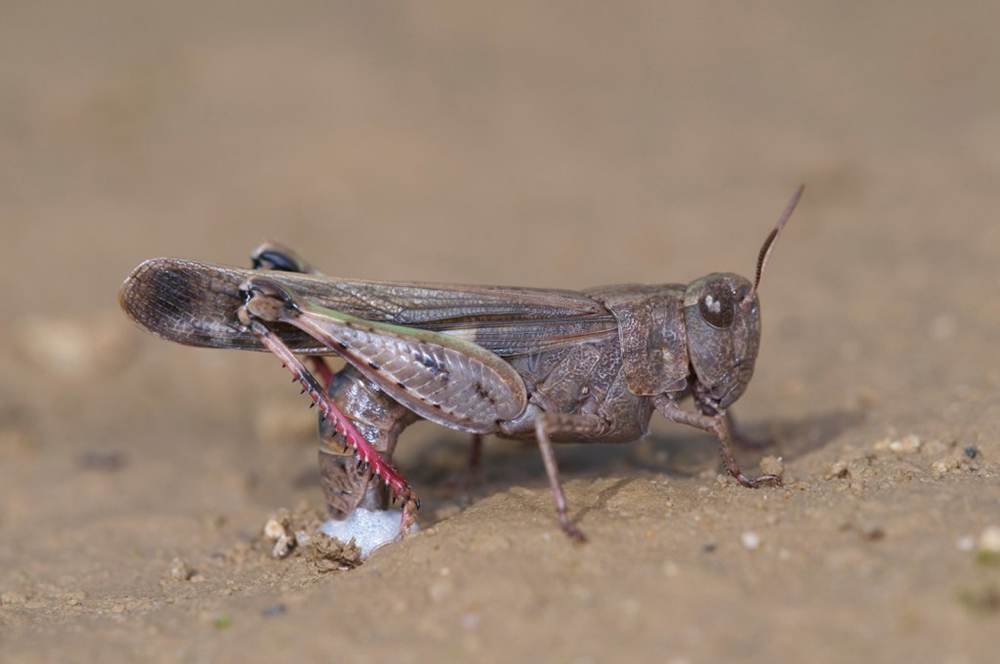
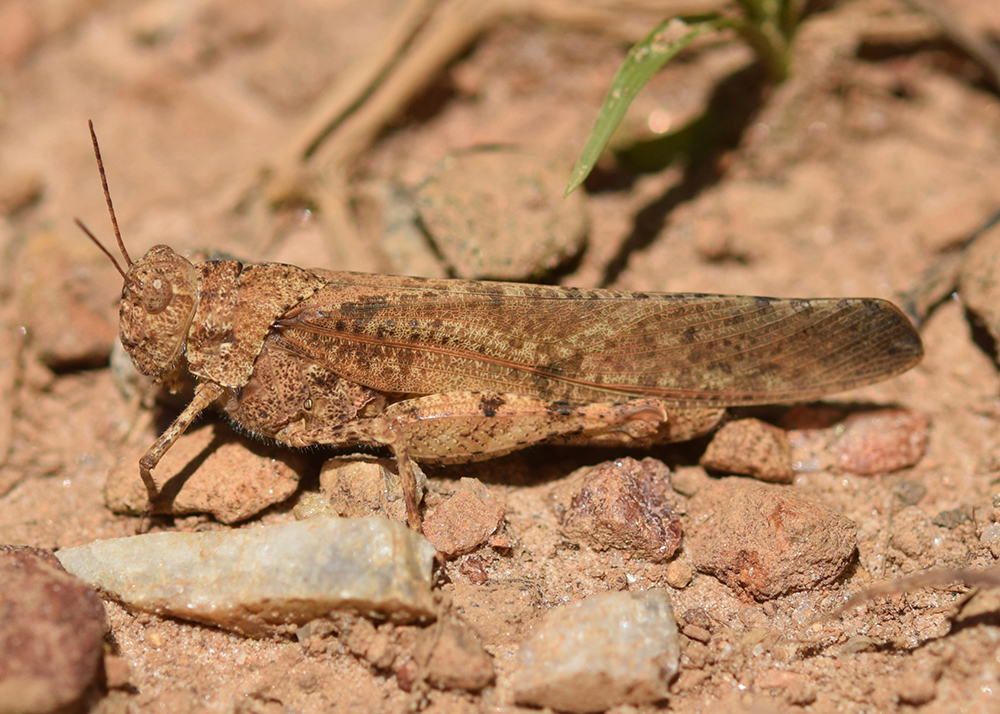
WHERE THEY ARE FOUND: Adults are found on vegetation, particularly herbaceous plants. They lay eggs in chambers in the soil 1" (2.54 cm) or more deep.
WHAT THEY EAT: Grasshoppers eat plants of all types, and some species can be very destructive of crops or rangeland; some may also scavenge for dead plant material.
LIFE CYCLE: Female grasshoppers drill into soil using their abdomen, secreting a substance that hardens to form a protective case around eggs laid within underground chambers. Nymphs resemble adults, except for their underdeveloped wings. Most species overwinter as eggs, but a few do overwinter as nymphs or adults.
APPROX. NUMBER OF KNOWN SPECIES: 10,000 worldwide (620 in North America).
RELATIVE ABUNDANCE: Grasshoppers can be abundant periodically in some parts of the United States.
NOTES OF INTEREST:
- Grasshoppers will defend themselves by kicking or attempting to bite, or they will regurgitate their food onto predators.
- Parasites of grasshopper eggs include blister beetles and bee flies, the larvae of which feed on the eggs.
- Grasshoppers are an important food source for birds, reptiles and mammals.
- During the day, they sing by rubbing their hind legs against their wings (unlike katydids that sing at night).
Mole crickets and camel crickets
PHYLUM: Arthropoda » CLASS: Insecta » ORDER: Orthoptera » FAMILIES: Gryllotalpidae, Rhaphidophoridae
SIZE: 0.2–1.97" (5–50 mm).
ECOLOGICAL ROLE: Mole crickets (Gryllotalpidae) move soil through their burrowing activities. Both mole crickets and camel crickets (Rhaphidophoridae) fit into food webs as herbivores, decomposers and predators.
DESCRIPTION: Camel crickets are brown or dark in color, appear humpbacked, are wingless and have long hind legs and long, sensitive antennae. Mole crickets have brown bodies, short antennae and powerful, shovellike front legs.
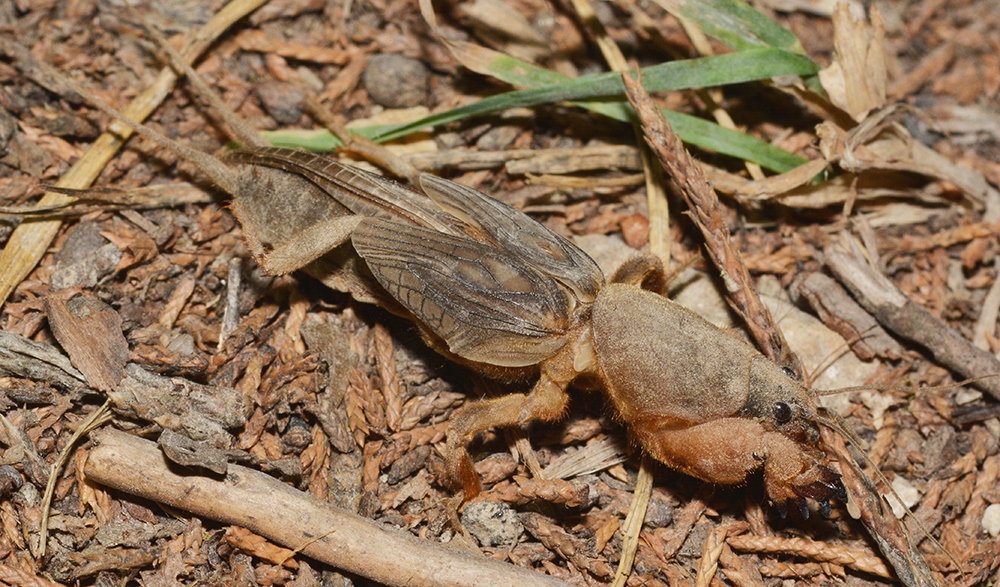
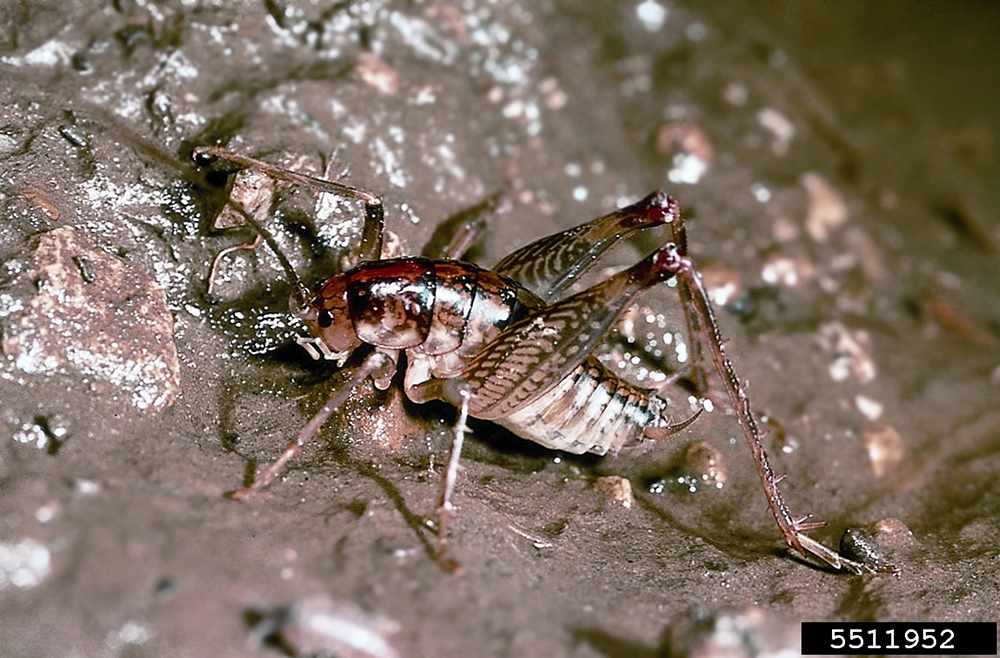
WHERE THEY ARE FOUND: Camel crickets are found in dark, moist places such as in leaf litter and mammal burrows, and under logs or stones. Mole crickets are often within underground burrows searching for food. Both groups are more active at night.
WHAT THEY EAT: Camel crickets eat plant debris and small arthropods, while mole crickets eat soil insects, earthworms and plant roots.
LIFE CYCLE: Mole crickets and camel crickets lay eggs in chambers in moist soil. Eggs hatch into nymphs, which resemble adults but are without wings through 10 molts. These crickets overwinter as nymphs or adults.
APPROX. NUMBER OF KNOWN SPECIES: 600 camel crickets worldwide (114 in the United States) and 50 mole crickets worldwide (seven in the United States).
RELATIVE ABUNDANCE: These are not generally abundant.
NOTES OF INTEREST:
- Camel crickets do not chirp, but mole crickets sing within their underground tunnels, rubbing their wings together. Male mole crickets will build a special tunnel for courtship, designed to amplify their chirps.
- Camel crickets are also called cave crickets or spider crickets.
- Mole cricket burrows are often 6–8" (150–200 mm) below the surface. Galleries longer than 20' (6.1 m) have been found. Sometimes they can cause minor damage to turf.
Burrower bugs
PHYLUM: Arthropoda » CLASS: Insecta » ORDER: Hemiptera » FAMILY: Cydnidae
SIZE: 0.12–0.39" (3–10 mm).
ECOLOGICAL ROLE: Burrower bugs, as their name suggests, are burrowers and may dig as deep as 17.7" (45 cm) into the ground; they are also herbivores in food webs.
DESCRIPTION: Burrower bugs are broadly oval, resembling small stink bugs in shape, and are black or brown. They have forelegs modified for digging, flattened with rows of stiff bristles, and their hind legs are also spiny.
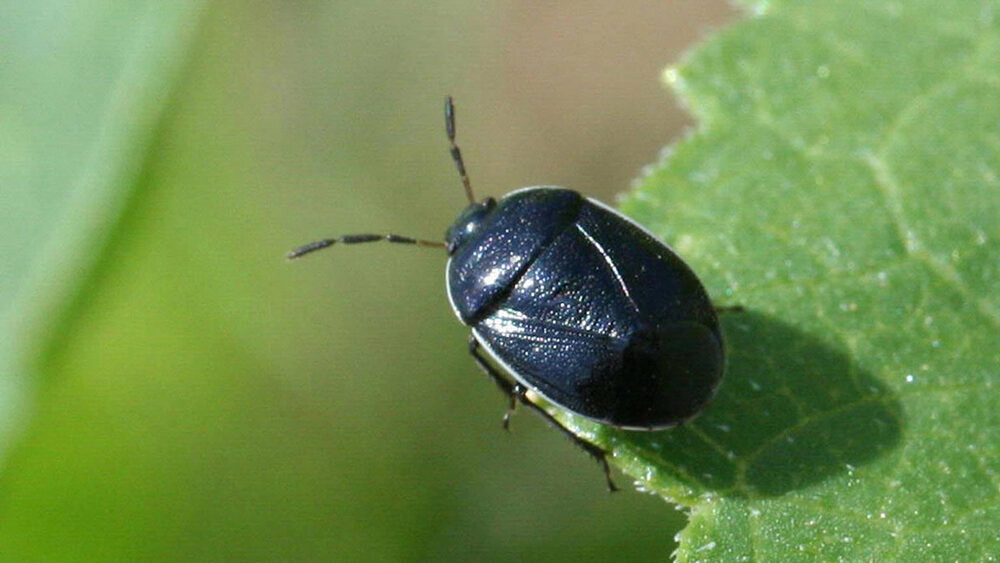
WHERE THEY ARE FOUND: Burrower bugs burrow in upper soil layers, around roots, and under stones or wood. They are most often seen at night.
WHAT THEY EAT: Burrower bugs tap into plant roots to drink juices.
LIFE CYCLE: Female burrower bugs lay eggs in a chamber among roots and remain with their eggs until they hatch. Young then crawl onto their mother and drink her microbe-containing anal secretions during the first days of their life. Young pass through five instars before reaching maturity.
APPROX. NUMBER OF KNOWN SPECIES: 770 worldwide (43 in North America).
RELATIVE ABUNDANCE: Burrower bugs are not very abundant.
NOTES OF INTEREST:
- Only those that are nursed by their mothers survive to feed on plant roots; mothers pass on bacteria that produce much-needed vitamins.
Cicadas
PHYLUM: Arthropoda » CLASS: Insecta » ORDER: Hemiptera » FAMILY: Cicadidae
SIZE: 0.98–1.97" (25–50 mm).
ECOLOGICAL ROLE: Cicadas influence soil systems as herbivores and burrowers.
DESCRIPTION: Cicadas have dark bodies with green markings, bulging eyes, short antennae and membranous, transparent wings that they hold like a tent over themselves. Nymphs have well-developed digging legs, used for tunneling in the soil to reach tree roots. Adult periodical cicadas (Magicicada) have red eyes and orange wing veins.
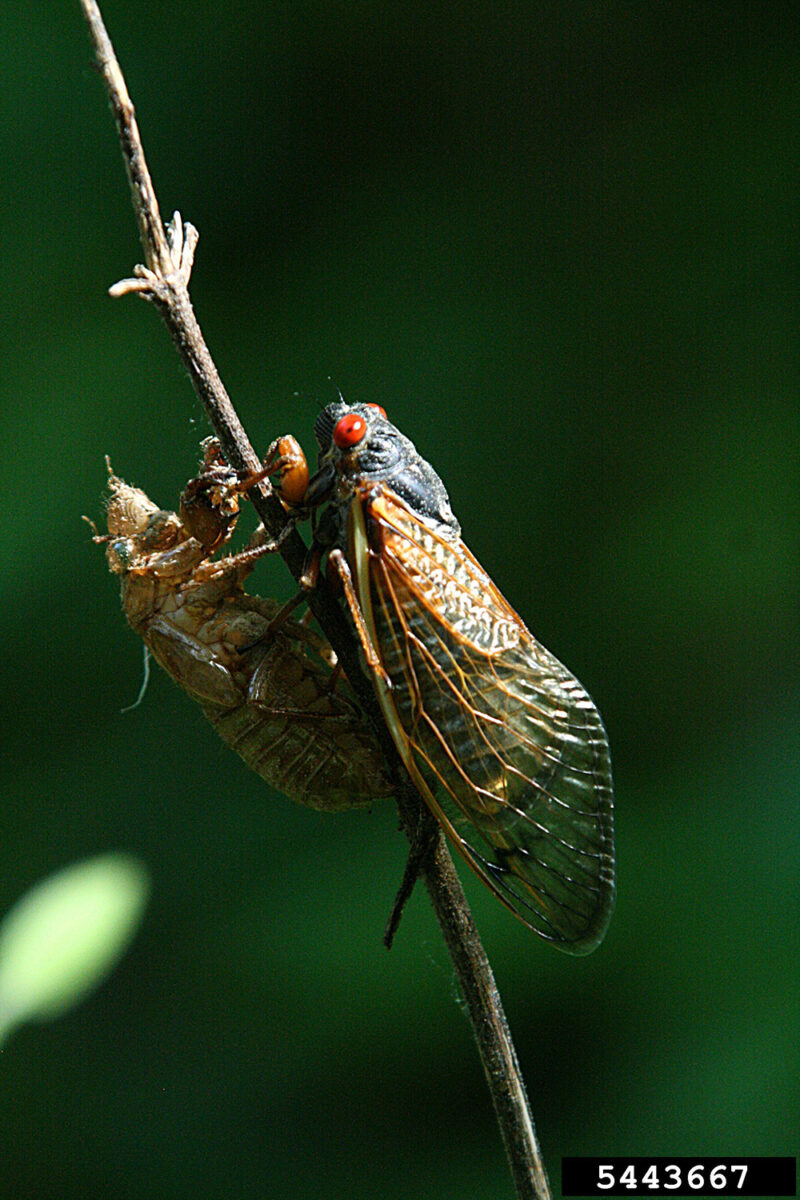
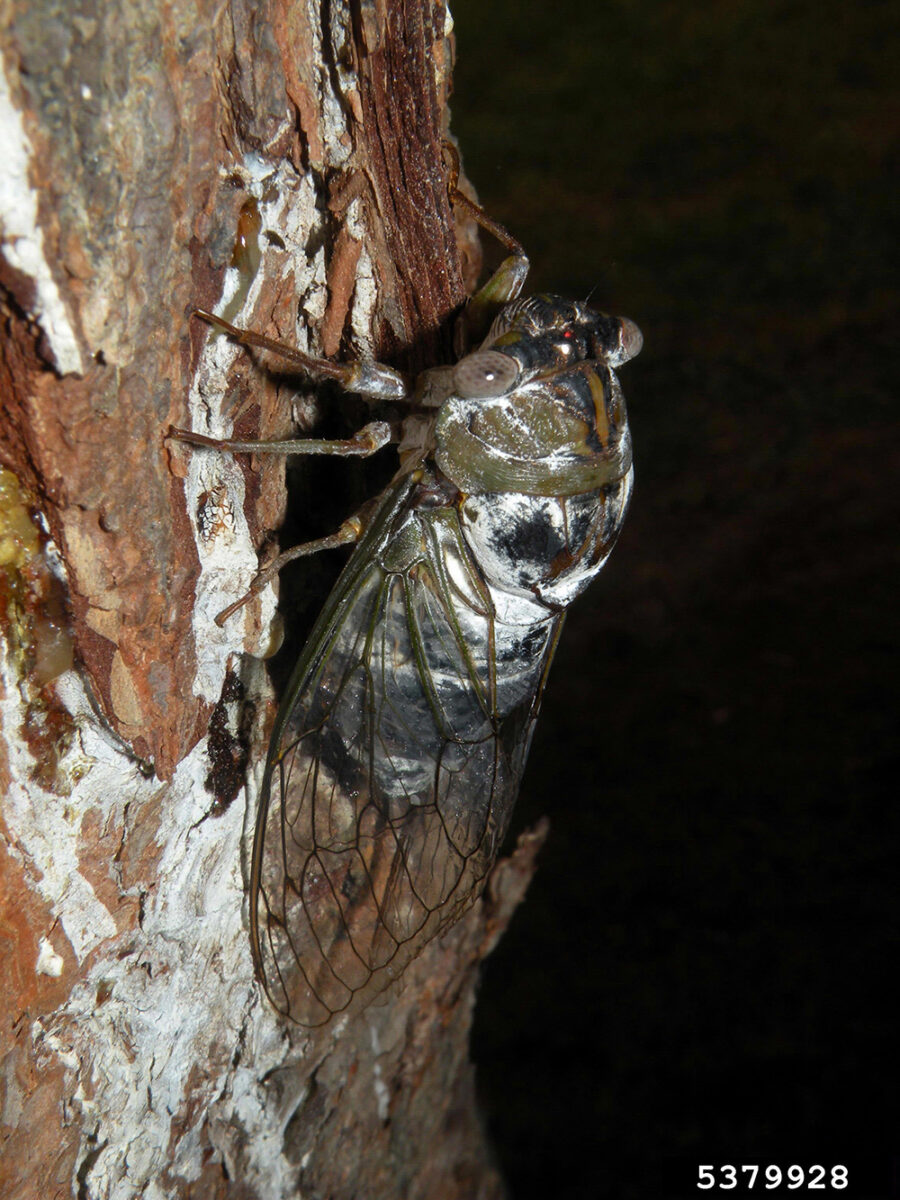
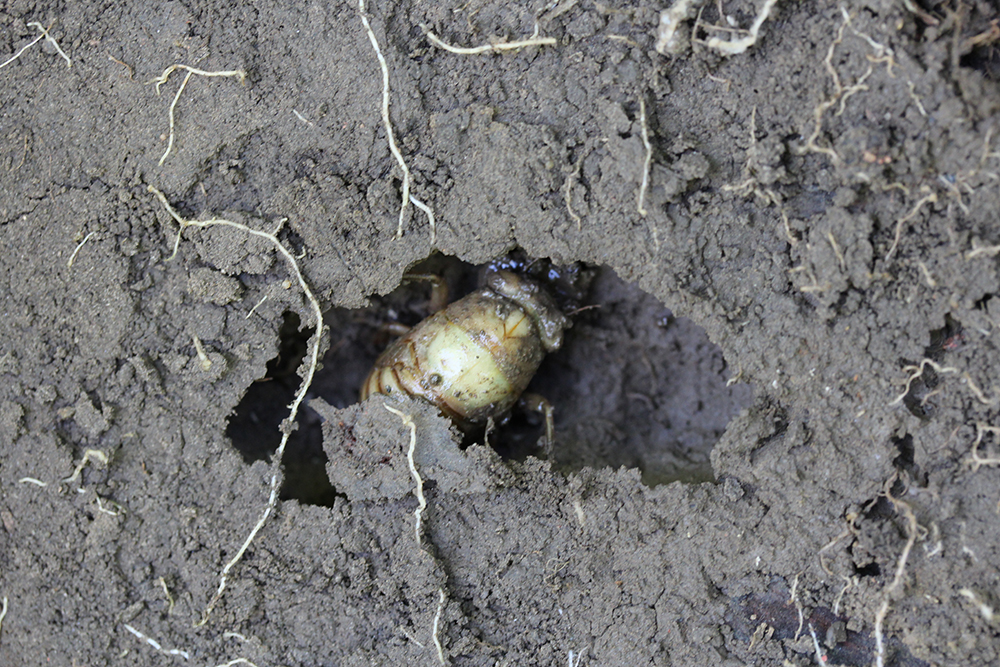
WHERE THEY ARE FOUND: Cicadas live in grasslands and forests.
WHAT THEY EAT: Larvae consume sap from tree roots, and adults drink plant sap.
LIFE CYCLE: Female cicadas insert their eggs into twigs; when the eggs hatch, the nymphs fall to the ground, dig down to the tree’s roots, and then tap the roots with their piercing, sucking mouthparts. Their development largely takes place underground. Nymphs emerge to molt into adults in spring or summer. Life span var by species; cicadas that emerge annually in the summer—for example, dog-day cicadas (Neotibicen canicularis)—spend four to seven years underground before emerging, while periodical cicadas have 13- or 17-year emergence cycles.
APPROX. NUMBER OF KNOWN SPECIES: 1,500 worldwide (170 in North America).
RELATIVE ABUNDANCE: Cicadas can be very numerous, especially during emergence of periodical cicada broods. An estimate in Indiana found 20,000 larval burrows counted under one apple tree.
NOTES OF INTEREST:
- Cicada parasites include beetle larvae from the family Rhipiceridae. Adult female rhipicerids lay their eggs on trees near cicada eggs, and their larvae then work their way through the soil to find the nymphal cicadas. Each cicada species has its own song.
- Searching for cicada shells, the split exoskeleton left behind when a nymph transforms into an adult, is a common pastime for kids in the summer.
Aphids, phylloxerans, scales and mealybugs
PHYLUM: Arthropoda » CLASS: Insecta » ORDER: Hemiptera » SUPERFAMILY: Coccoidea » FAMILIES: Aphididae, Coccidae, Diaspididae, Margarodidae, Phylloxeridae, Pseudococcidae
SIZE: 0.039–0.31" (1–8 mm).
ECOLOGICAL ROLE: In soil food webs, these insects are fungivores and herbivores, and some can be economically damaging crop pests.
DESCRIPTION: Aphid, phylloxeran, scale, and mealybug adults can be winged wingless, can secrete waxy fibers or powder to cover their bodies and have beak for sucking plant juices. Aphids and phylloxerans have soft, globular or pear- shaped bodies. Aphids have long antennae, and they have tubelike structures, called cornicles, at the end of the abdomen. Phylloxerans hold their wings flat over their body at rest. Scales belong to the families Coccidae, Diaspididae, and Margarodidae. They have armor-like, flattened, domed coverings that blend in easily on plant parts. Mealybugs are in the family Pseudococcidae and are often light in color, with a cottony appearance. Scale and mealybug nymphs have legs and are mobile, but in most species, the adult females usually lack wings, legs and antennae; they settle into one spot to feed throughout their life. Once they settle scales and mealybugs secrete a waxy covering over their body.
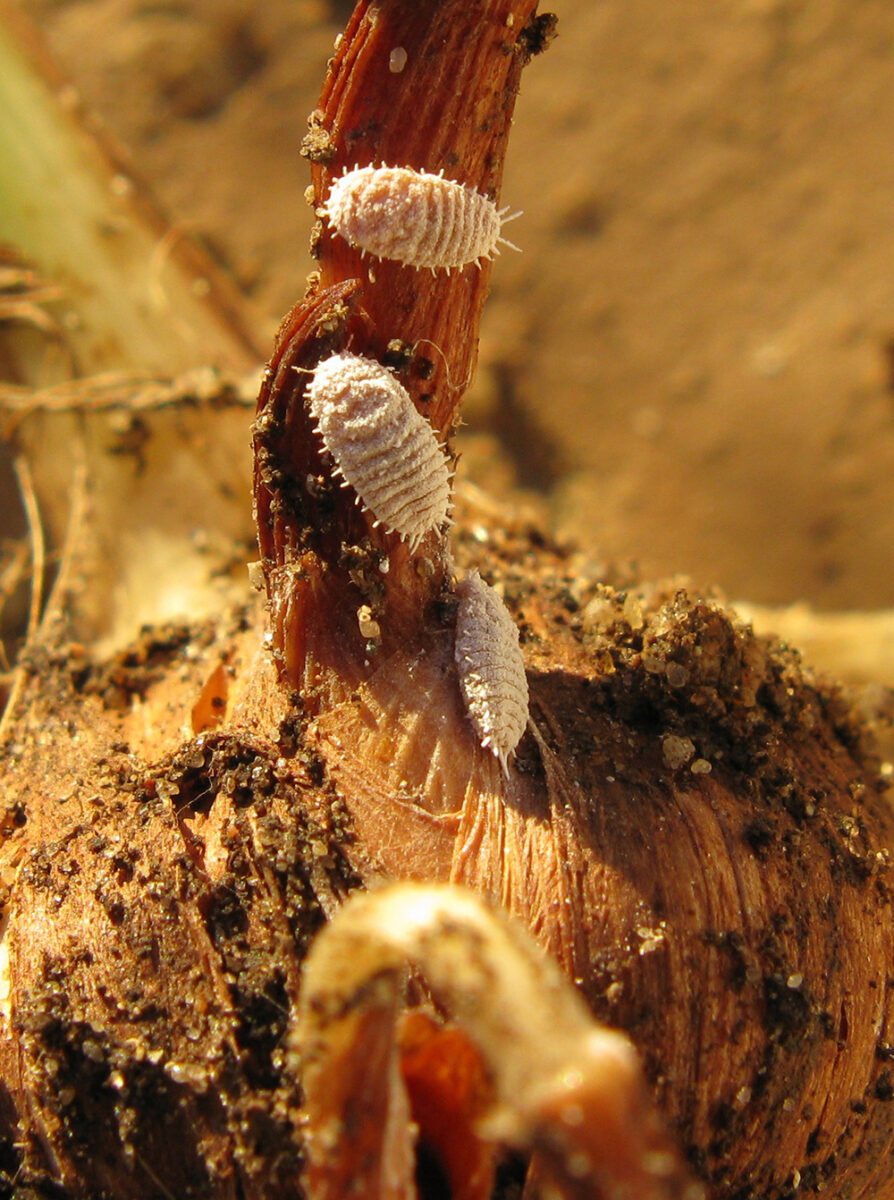
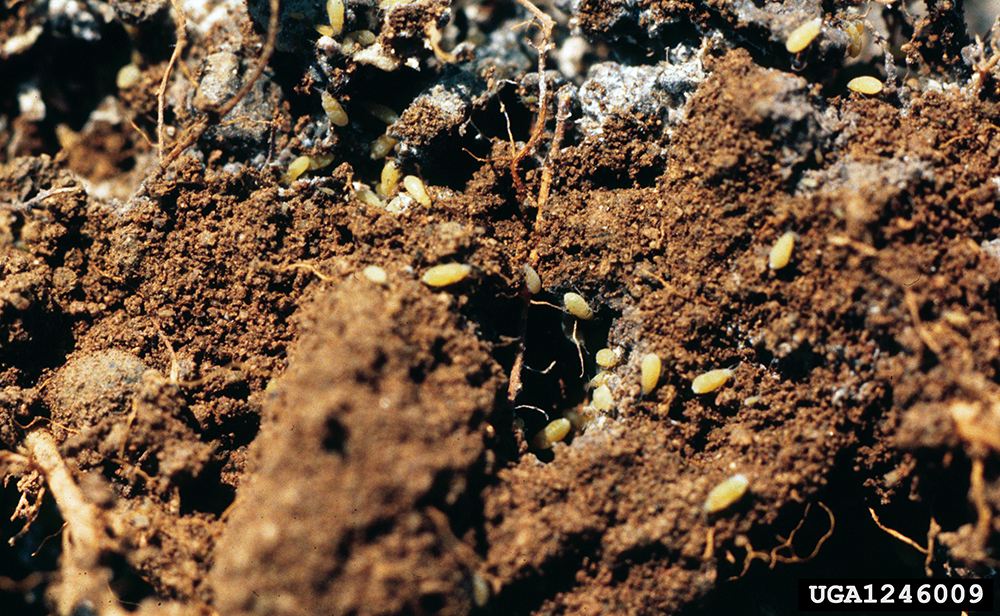
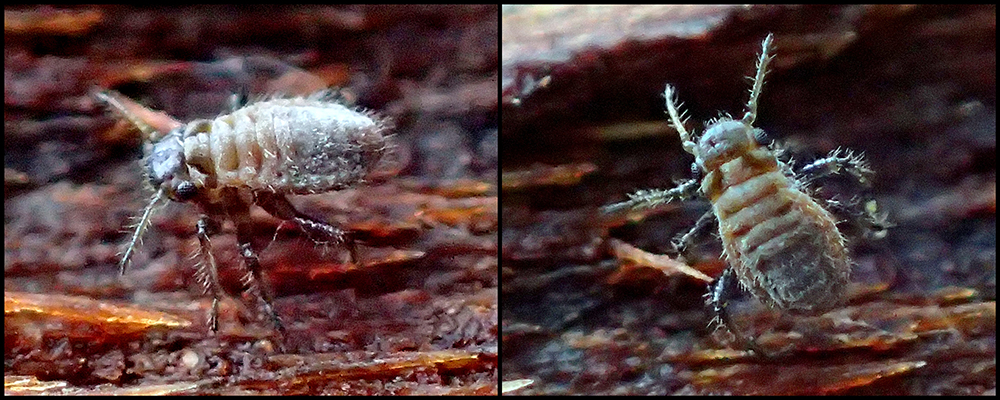
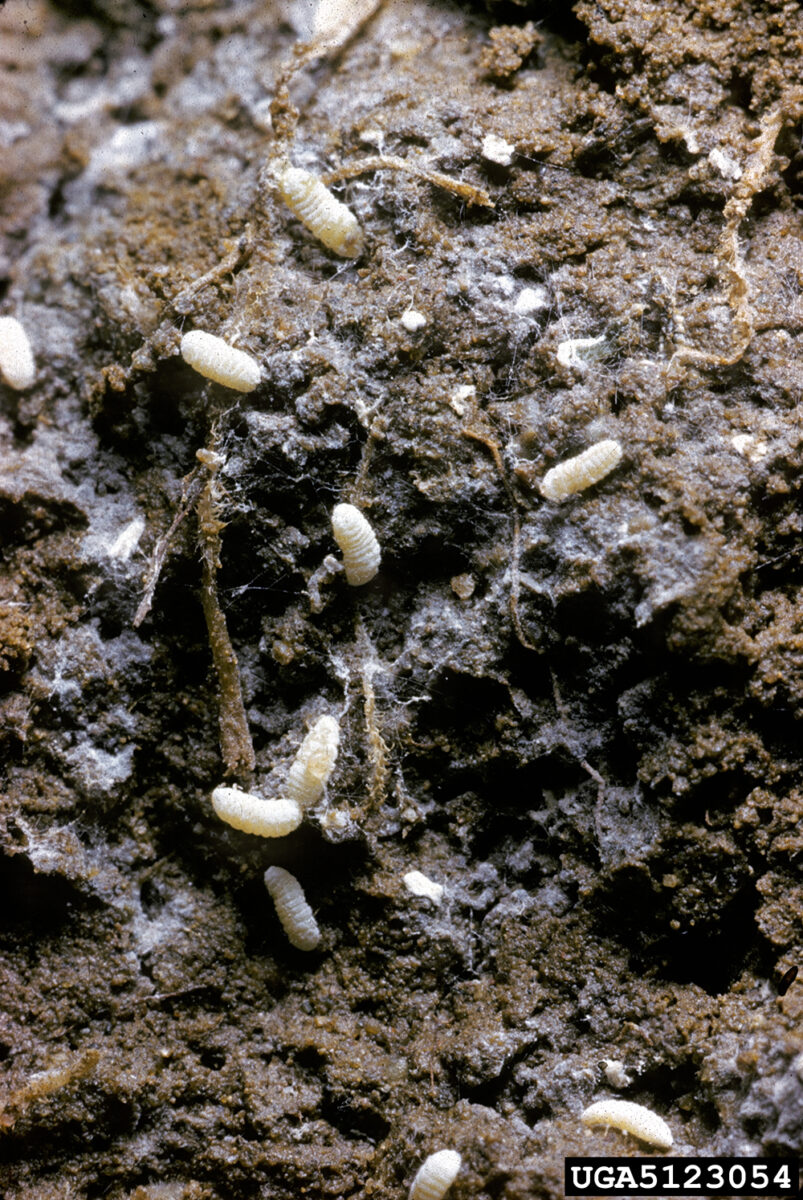
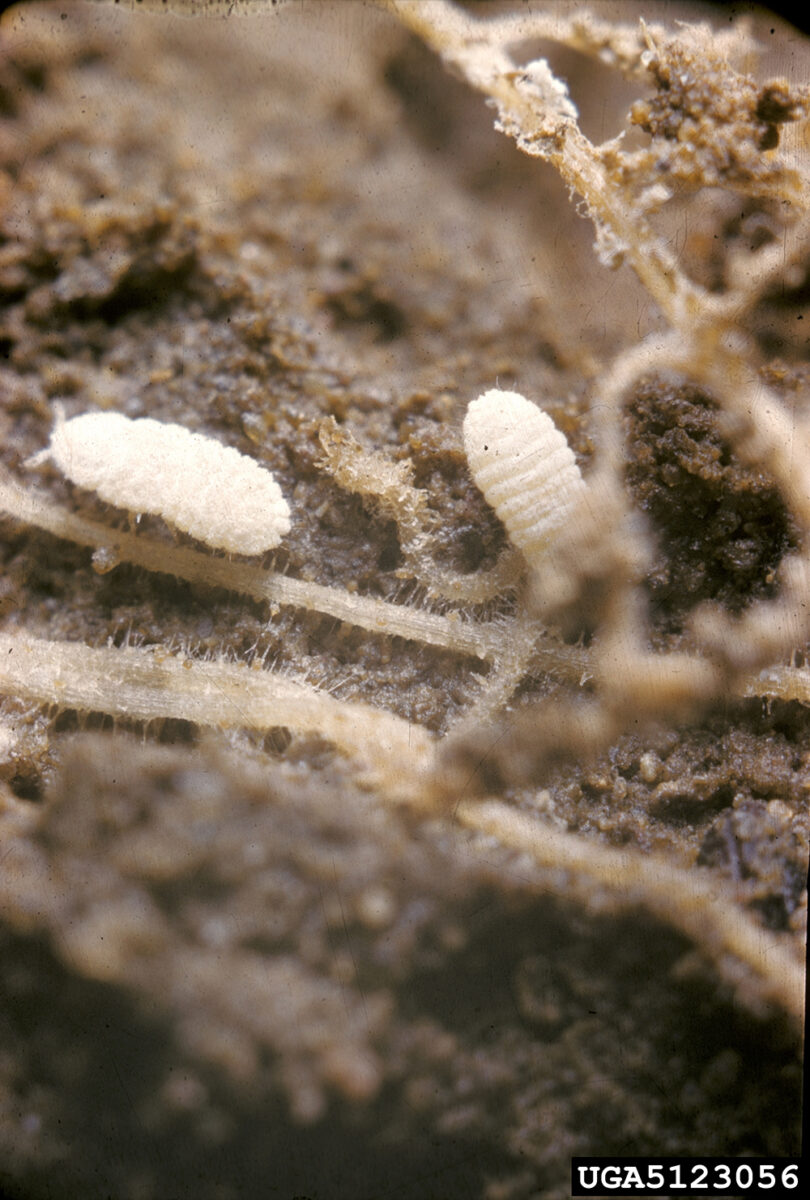
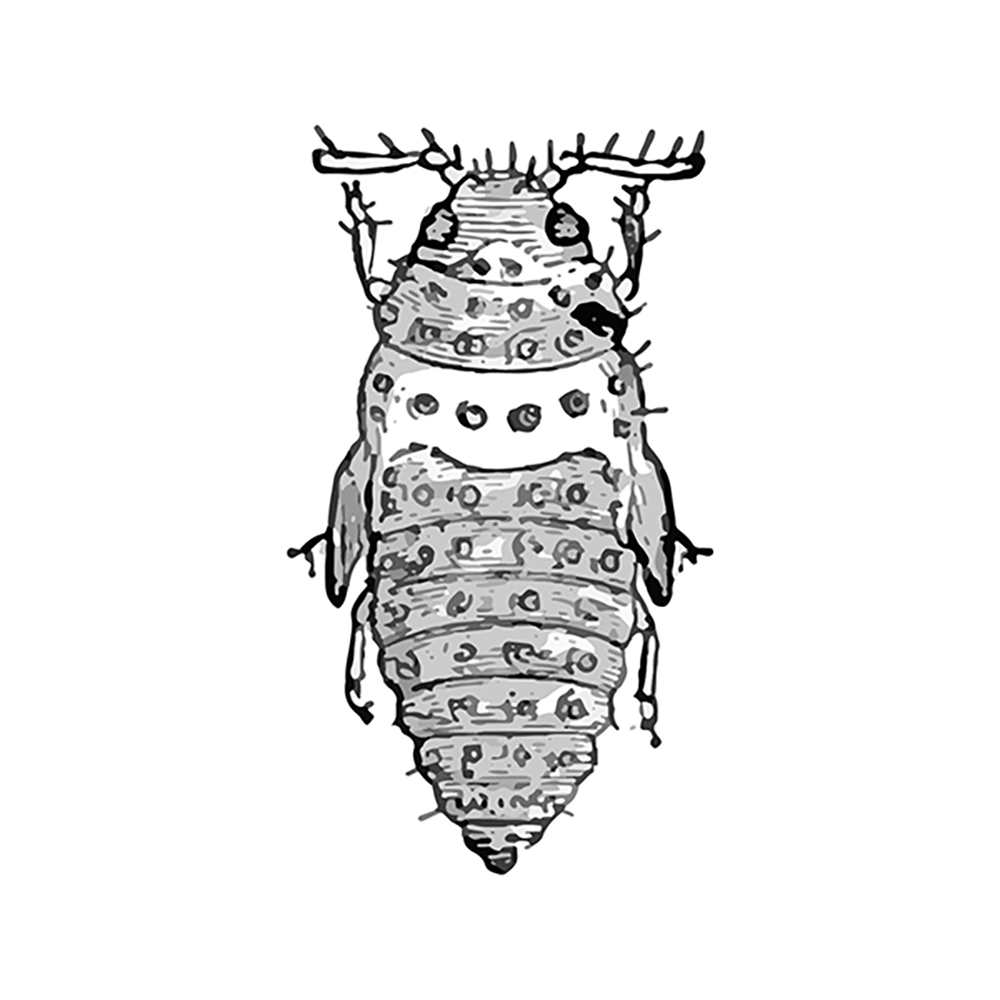
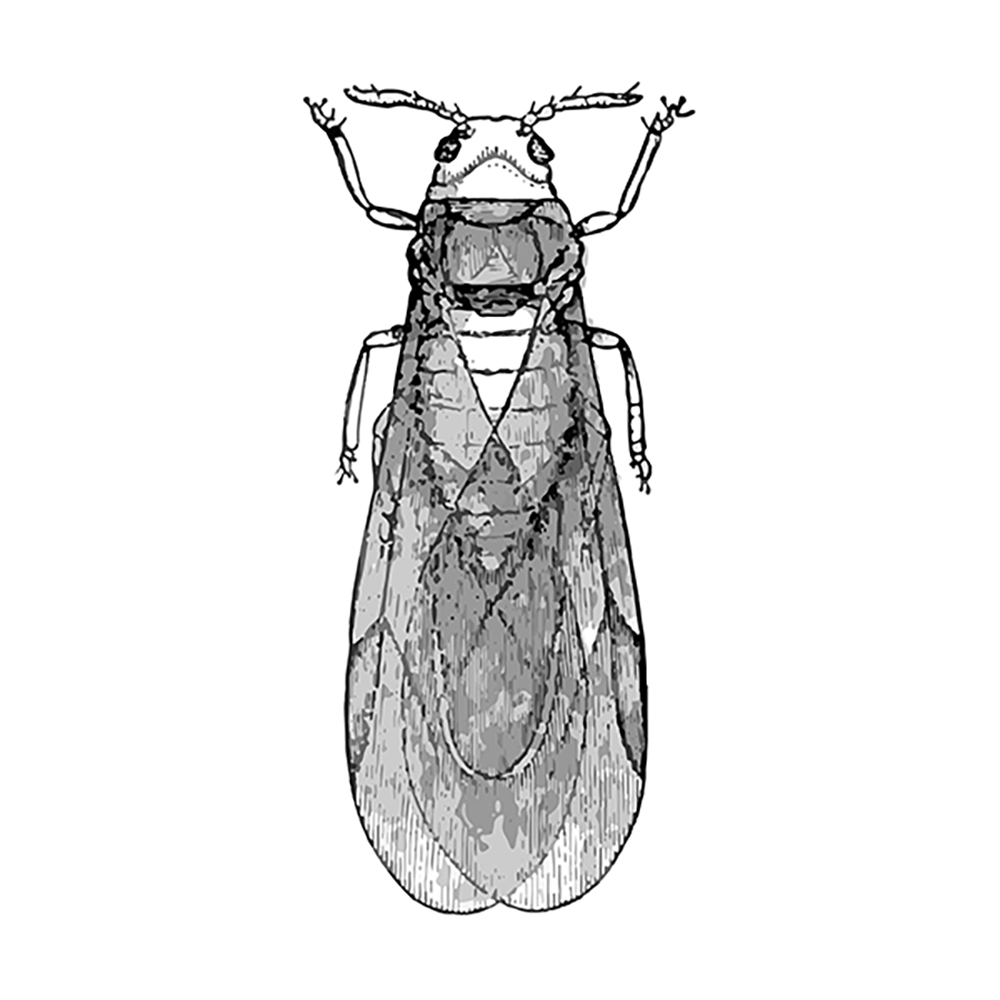
WHERE THEY ARE FOUND: These insects live within leaf litter and in the soil am roots; many aphids, scales and mealybugs are also found aboveground on stems and leaves.
WHAT THEY EAT: Soil-dwelling aphids, phylloxerans, scales and mealybugs feed on fungal hyphae and plant sap from roots. Phylloxerans often have a single plant species as a host, and some form galls on those plants. Scales and mealybugs feed on plant sap.
LIFE CYCLE: Aphids and phylloxerans can have complex life cycles, with changing body forms (e.g., winged vs. wingless) and reproductive strategies (e.g., parthenogenetic as opposed to sexual) between generations. Most aphid and phylloxeran species overwinter as eggs and can have many generations during the growing season. Aphids can also give birth to living young. Female scales and mealybugs give birth to living young, and some give birth without mating.
APPROX. NUMBER OF KNOWN SPECIES: 3,500 aphids worldwide (1,300 in North America), 75 phylloxerans worldwide, and 6,000 scales and mealybugs worldwide (1,100 in North America). Note: these estimates include both aboveground and belowground species.
RELATIVE ABUNDANCE: Aphids can be very abundant, increasing their populations quickly if conditions are favorable.
NOTES OF INTEREST:
- Some ants tend aphid colonies, guarding them from predators in exchange for honeydew (excessive sap that is secreted by aphids), and will carry root aphids to newly sprouted roots.
- Aphids are serious pests of many cultivated plants and transmit a number of plant diseases. Mealybugs and scales can also be problematic pests of crops and ornamental plants.
- Phylloxerans are named for the effects they have on plants (phyllo = leaf; xero = dry).
- Aphid cornicles secrete defensive fluids.
- As new nymphs, mealybugs and scales roam to find a spot in which to settle. Female scales will remain to feed in one spot for the rest of their lives, and although mealybugs are slightly more mobile as adults, they don’t move far from their feeding spot.
Scorpionflies and hangingflies
PHYLUM: Arthropoda » CLASS: Insecta » ORDER: Mecoptera » FAMILIES: Bittacidae, Panorpidae
SIZE: 0.35–0.87" (9–22 mm).
ECOLOGICAL ROLE: In soil food webs, scorpionflies and hangingflies are predators and decomposers.
DESCRIPTION: Adults have slender bodies, threadlike antennae, and an elongated face that looks a bit horselike. Scorpionflies (Panorpidae) have chewing mouthparts and males have a bulbous abdominal segment that is often curved above the back, much like a scorpion. Hangingflies (Bittacidae) have long, slender legs with spines and biting jaws. Larvae are caterpillar-like, and scorpionfly larvae have bumps and hairs that hold pieces of dirt or leaves that help keep them camouflaged from predators.
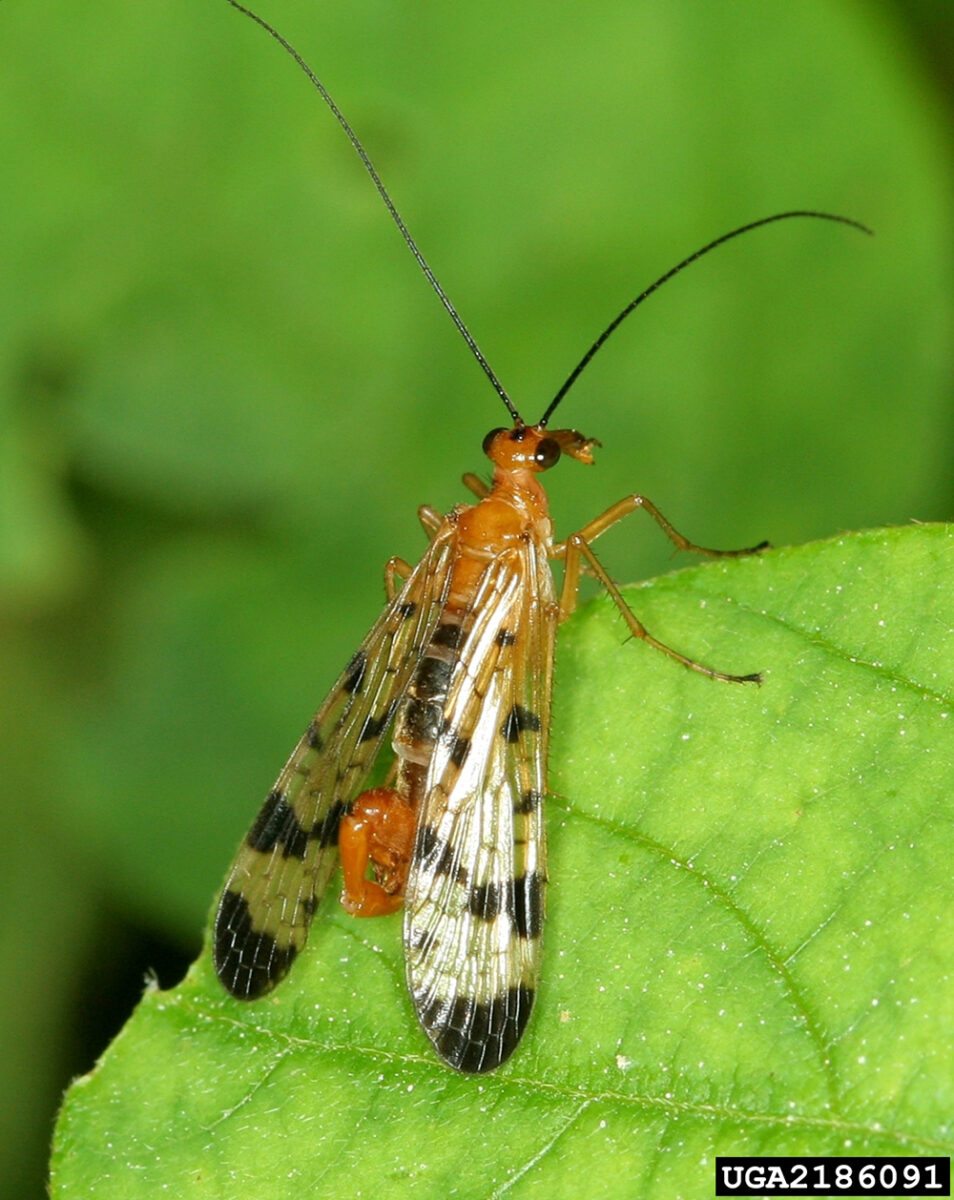
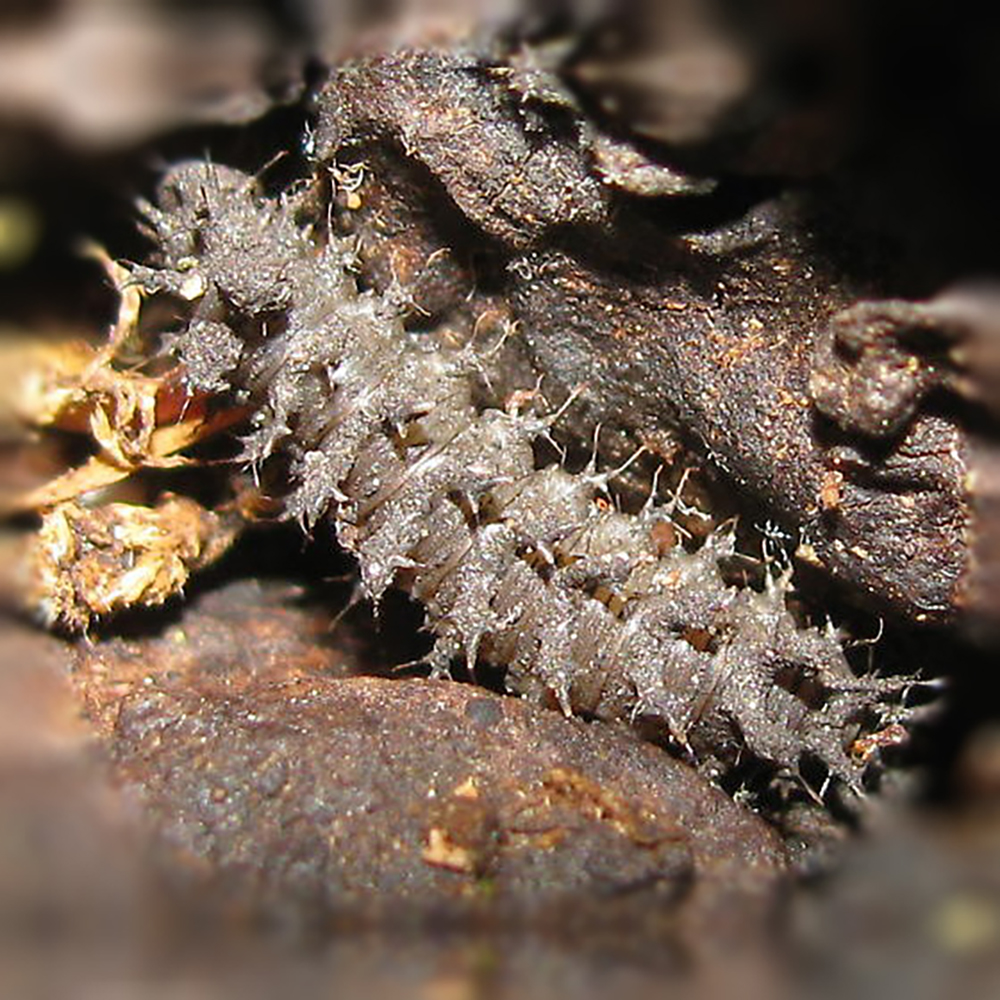
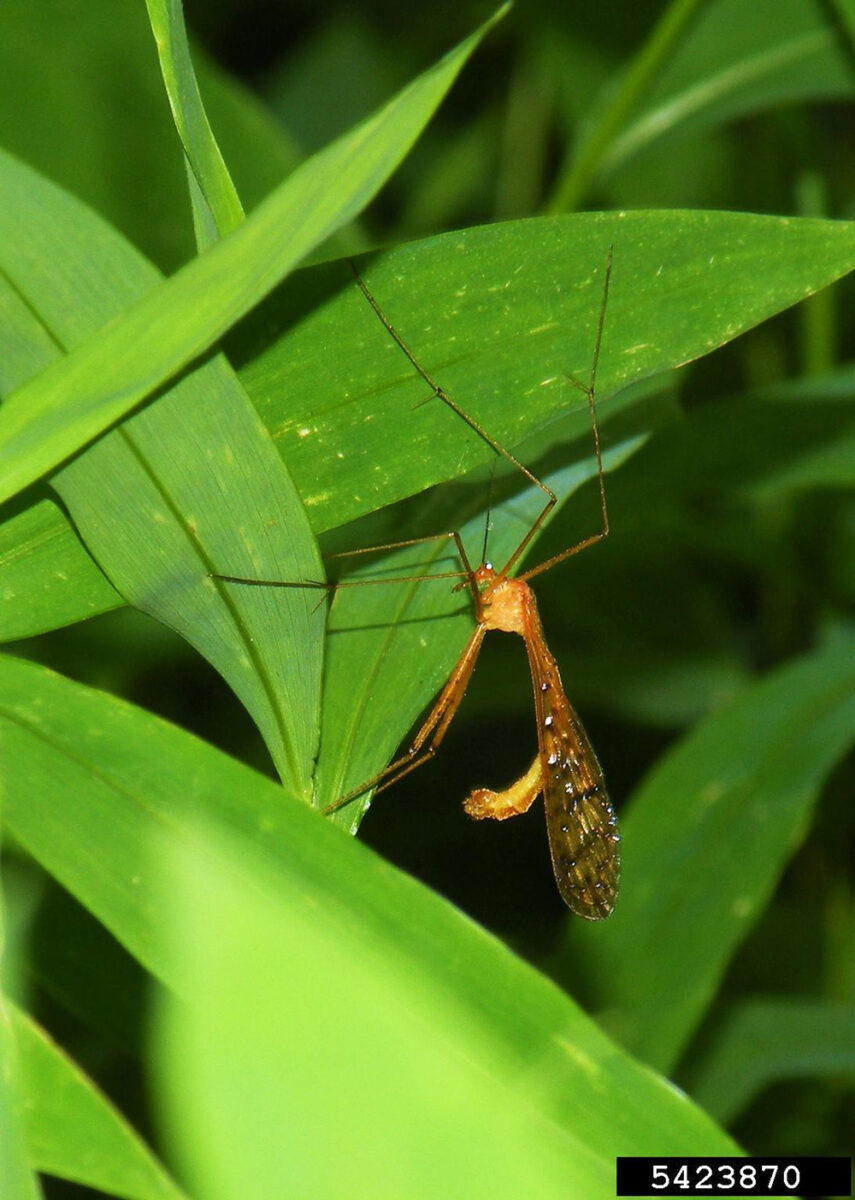
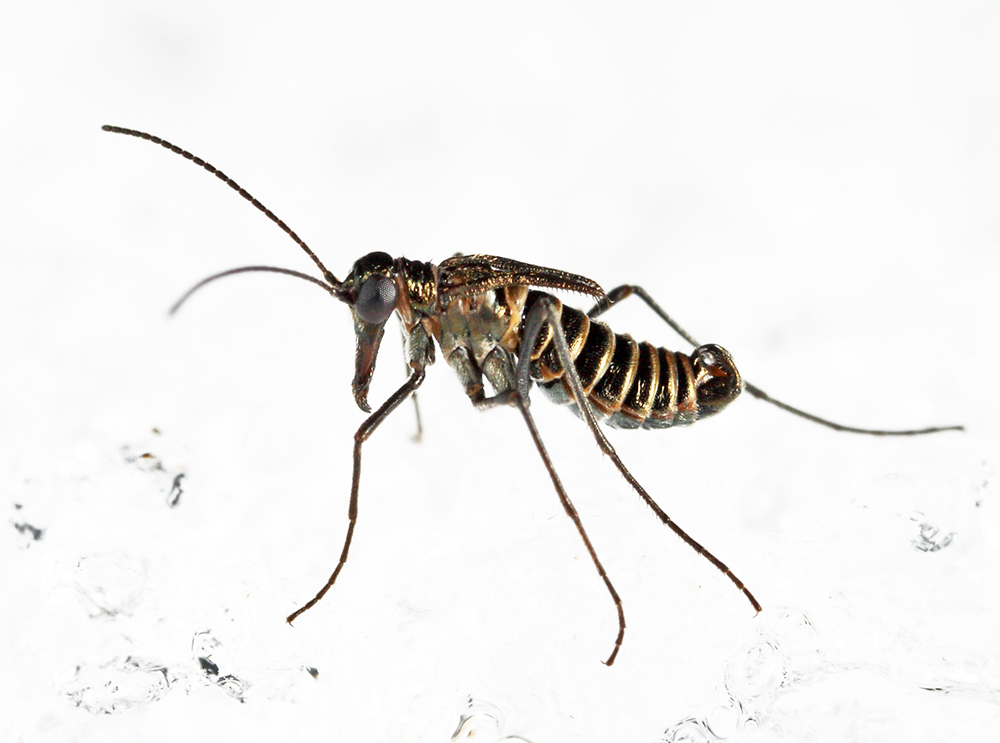
WHERE THEY ARE FOUND: Scorpionfly and hangingfly eggs, larvae and pupae are found in the soil and leaf litter. Adult scorpionflies are also found on litter and occasionally on flowers. Hangingfly adults hang from leaves by their legs to catch prey that comes.
WHAT THEY EAT: Scorpionfly larva and adults scavenge for dead insects, snails, or worms on the soil surface or in leaf litter. Hangingfly adults eat caterpillars, flies, moths, and aphids.
LIFE CYCLE: Scorpionflies and hangingflies lay eggs in the soil, and larvae live in tunnels they create until pupation.
APPROX. NUMBER OF KNOWN SPECIES: 170 hangingflies worldwide (10 in North America); 360 scorpionflies worldwide (55 in North America).
RELATIVE ABUNDANCE: Data unavailable.
NOTES OF INTEREST:
- Snow scorpionflies (in the family Boreidae) are wingless and live gregariously in communities. Snow scorpionflies are most active in winter and early spring, and they can be seen walking across snow. Snow scorpionflies feed on liverworts and mosses and are less common on agricultural lands than hangingflies or scorpionflies.
- Adult scorpionflies sometimes steal food from spider webs.
- This group of insects are not true flies, despite their common names; they may be most closely related to fleas.
Antlions
PHYLUM: Arthropoda » CLASS: Insecta » ORDER: Neuroptera » FAMILY: Myrmeleontidae
SIZE: Larvae are 0.39–0.87" (10–22 mm) and adults are 1.57–3.15" (40–80 mm).
ECOLOGICAL ROLE: Antlion larvae are voracious predators and burrowers.
DESCRIPTION: Adult antlions resemble damselflies, with long, clubbed antennae. Larvae have a round body, with a flat head and powerful sicklelike jaws.
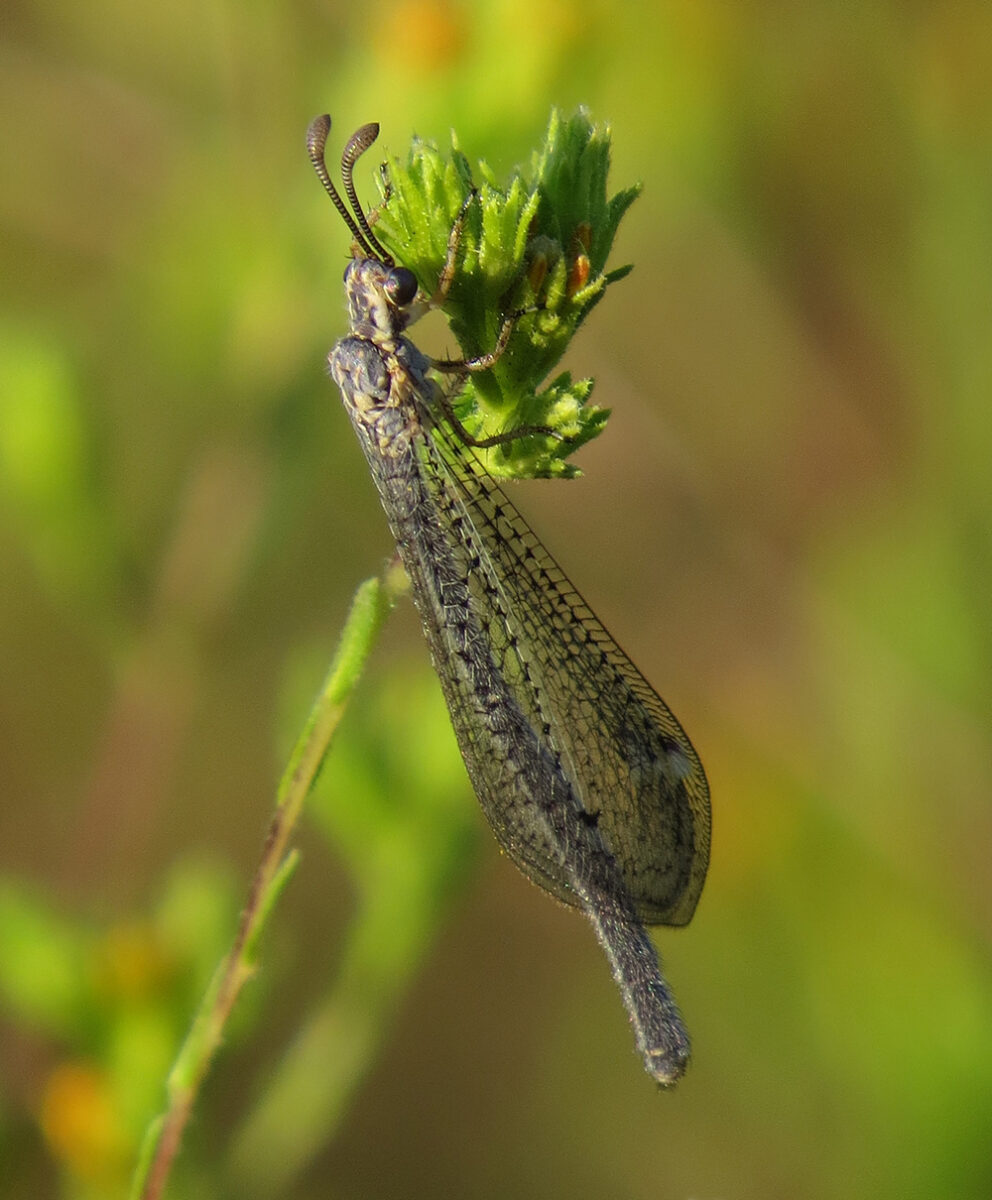
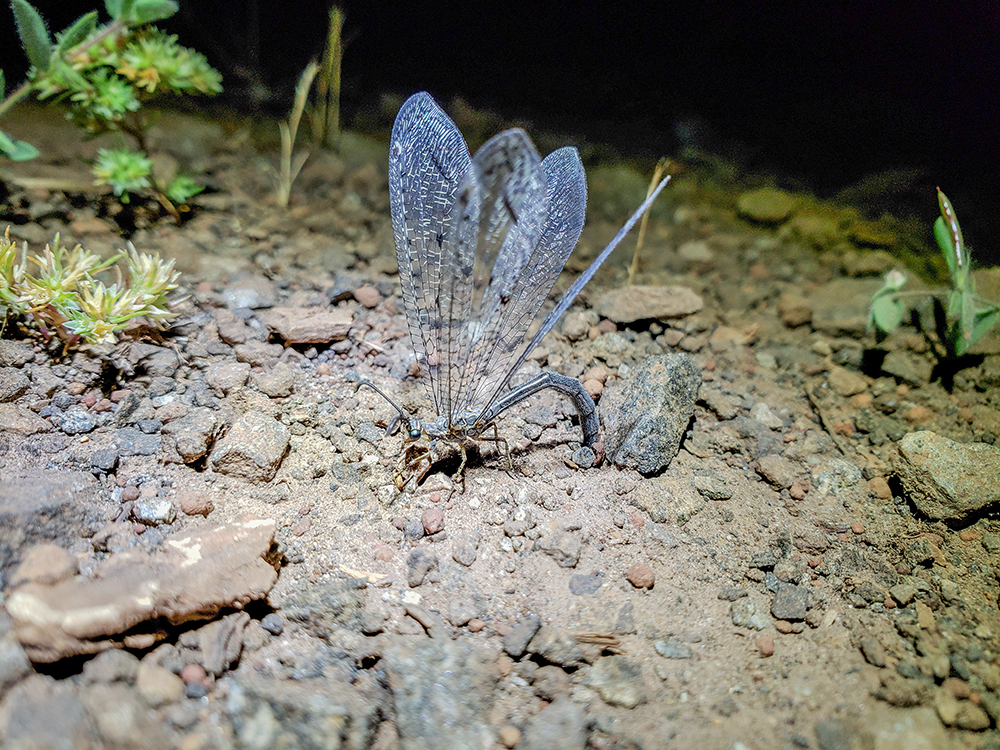
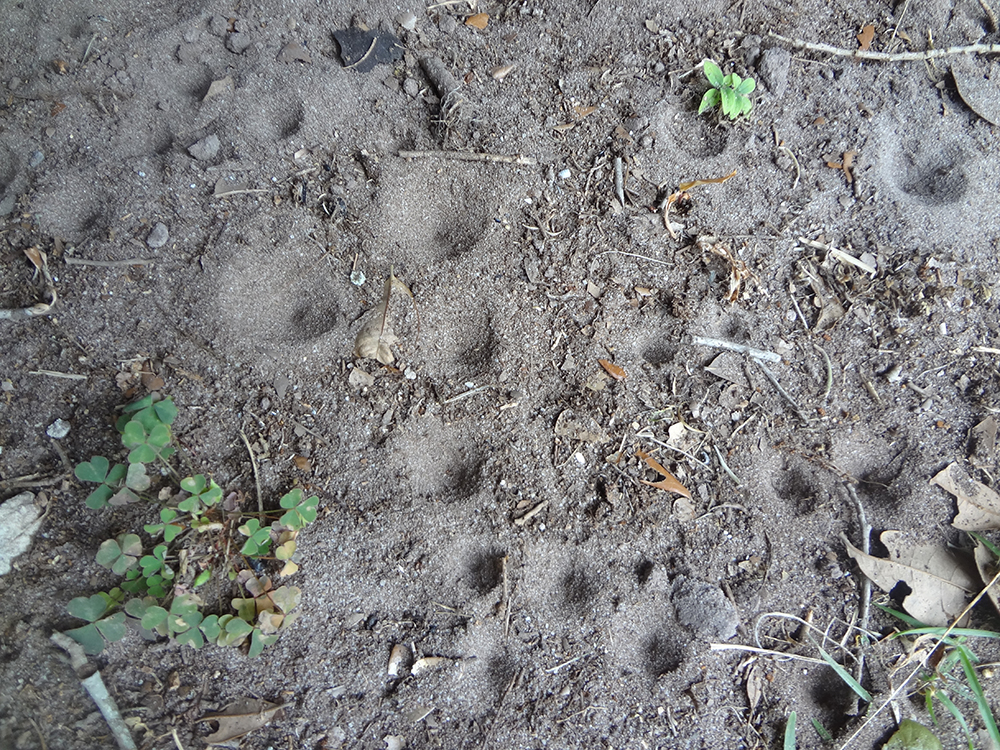
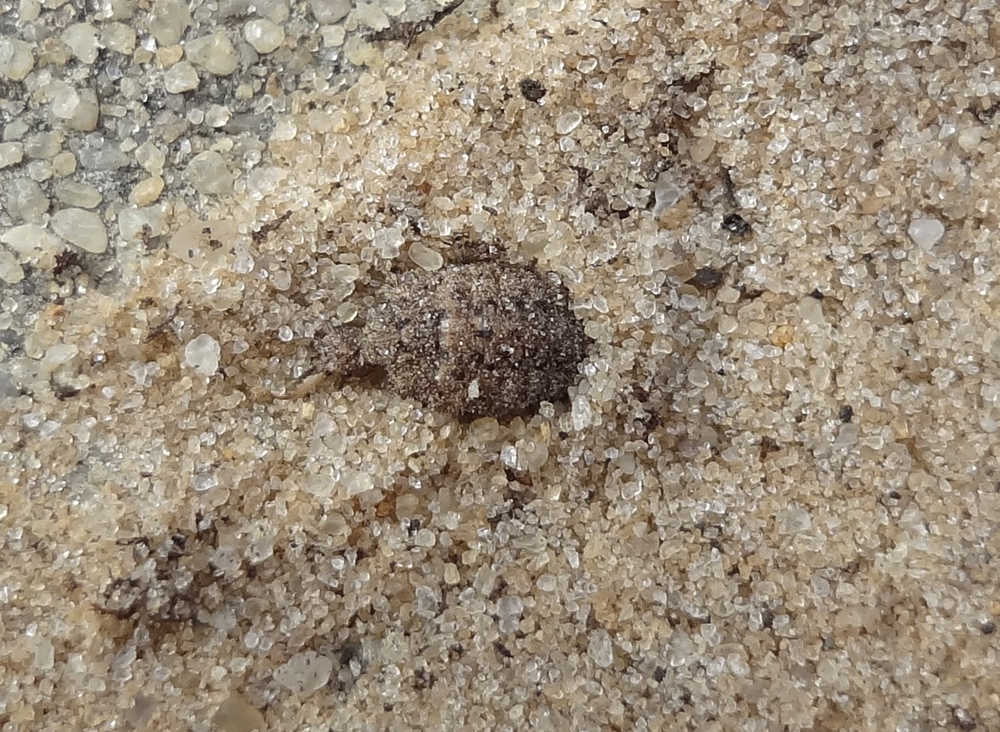
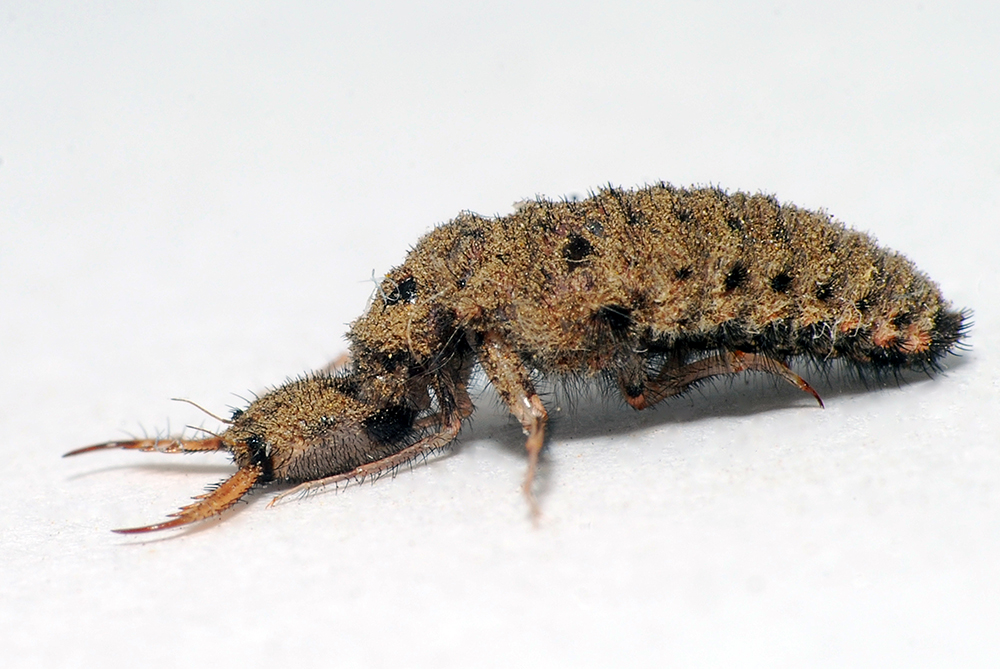
WHERE THEY ARE FOUND: Larvae are found at the bottom of small, conical pits in the soil where they hide and wait for insect prey to fall in. Adults fly at night.
WHAT THEY EAT: Larvae eat ants and other arthropods that live or travel on the soil surface. Adults may be predaceous or consume pollen and nectar.
LIFE CYCLE: Antlions lay eggs in the soil. Larvae reside in the soil, catching prey, and can survive long periods without food (it can take several years to reach adulthood when food is not plentiful). Cocoons are made of sand, soil, or other materials, along with spun silk, and are buried in the soil.
APPROX. NUMBER OF KNOWN SPECIES: 2,000 worldwide (90 in North America).
RELATIVE ABUNDANCE: Antlions are less common in northern areas; they are most abundant in dry, sandy habitats.
NOTES OF INTEREST:
- Antlion larvae will throw soil at prey if needed so that they fall down the pit into their jaws.
- Larvae are known as doodlebugs, so named for the trails they leave behind them on the soil.
- Antlions can feel the vibrations from prey in their pit, detecting movement with the sensory bristles all over their body.
- Larvae seize prey with their pincers, immobilizing them with a secretion and then sucking out their insides after digestive fluids have done their work.
- Adults are feeble fliers.
- Some larvae may move throughout the day according to the solar exposure or may bury themselves deeper when it gets too hot.
Soil-dwelling moth caterpillars
PHYLUM: Arthropoda » CLASS: Insecta » ORDER: Lepidoptera » FAMILIES: Hepialidae, Noctuidae, Psychidae, Tineidae
SIZE: 0.24–1.97" (6–50 mm).
ECOLOGICAL ROLE: Only a few groups of moths have species withcaterpillars that live in the soil. Caterpillars of these soil-dwelling moths are herbivores, decomposers, fungivores, and predators in soil food webs.
DESCRIPTION: These caterpillars are soft bodied, with a hardened head and dark body coloration. Bagworm (Psychidae) caterpillars build silken cases with sand, small stones or pieces of plants. Adult bagworm moth males have wings, while females are wingless and remain in their larval case. Adults of other soil moths—including ghost moths (Hepialidae), cutworms (Noctuidae) and clothes moths (Tineidae)—are often drab in color, with camouflage patterns on their wings.
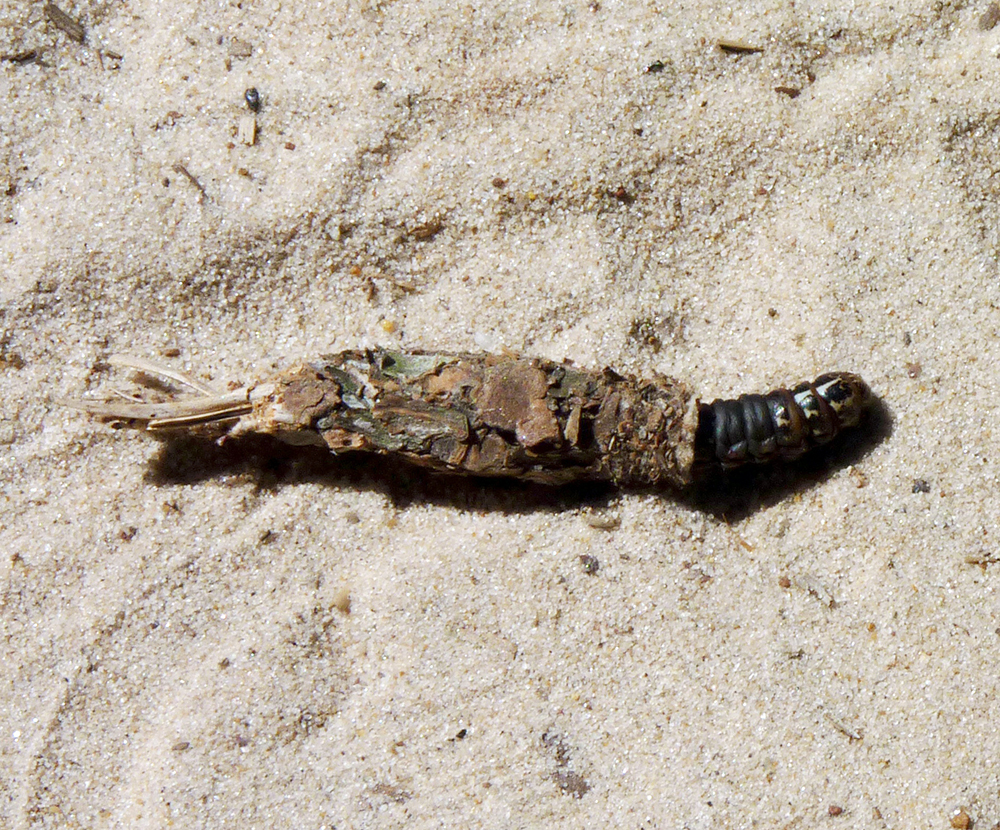
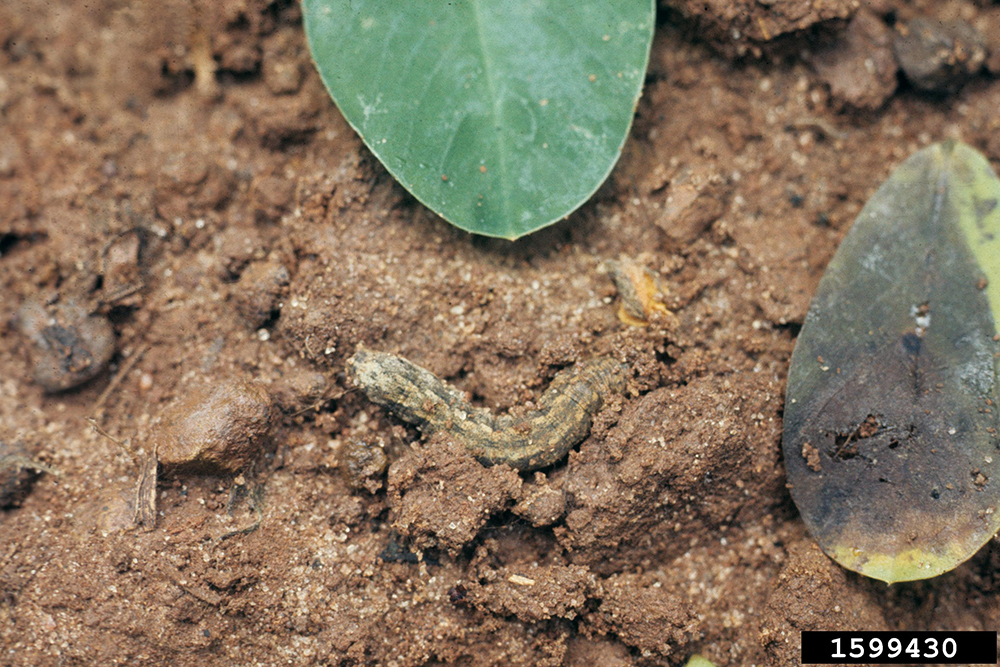
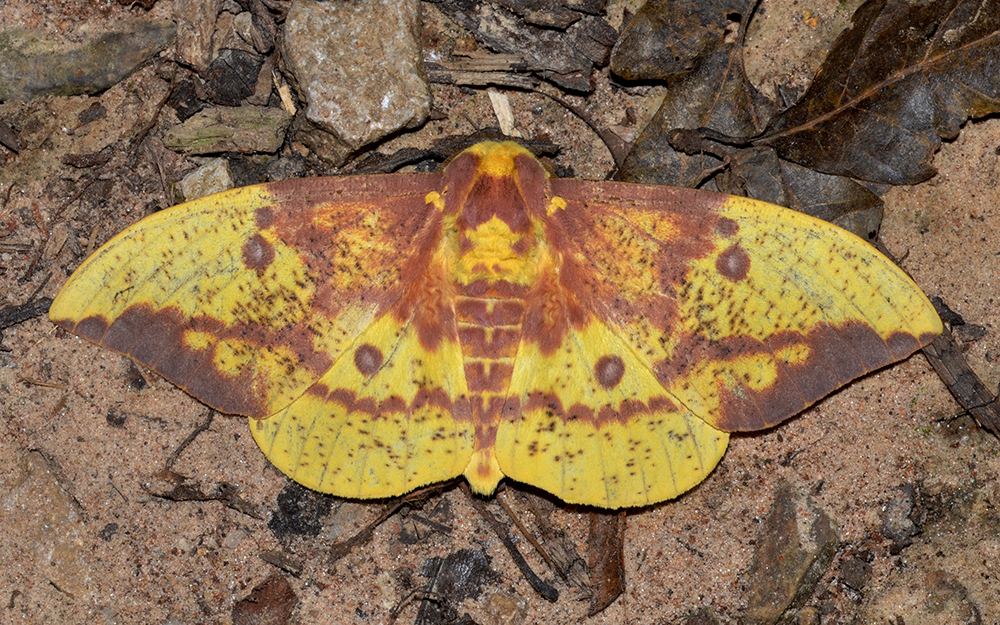
WHERE THEY ARE FOUND: Ghost moth and cutworm caterpillars are found in the roots of plants. Bagworm caterpillars are found in soil tunnels inside cases of spun silk and debris, some within ant colonies. Clothes moth caterpillars are found inside a tubular web in the ground, as deep as 1.97' (0.6 m).
WHAT THEY EAT: Caterpillars of these moths eat roots, decaying plants and wood, algae, moss, lichen and fungi.
LIFE CYCLE: Caterpillars, the larval stage of moths, feed in the soil or leaf litter and pupate in the soil. Adults live aboveground.
APPROX. NUMBER OF KNOWN SPECIES: 3,000 clothes moths worldwide (190 in North America), 20,000 cutworms worldwide (2,500 in North America), 1,100 bagworms worldwide (28 in North America) and 500 ghost moths worldwide (20 in North America) Note: not all members of these families dwell in the soil as caterpillars.
RELATIVE ABUNDANCE: Population densities of psychid moths can be high.
NOTES OF INTEREST:
- Some cutworm caterpillars live within roots and pupate in tunnels in the soil lined with silk. There are also a few root-boring caterpillars in the families Sesiidae and Pyralidae.
- Some noctuid caterpillars hide in the soil during the day and feed above ground at night or drag plants into their tunnels.
This material is based upon work that is supported by the National Institute of Food and Agriculture, U.S. Department of Agriculture through the Sustainable Agriculture Research and Education (SARE) program. Any opinions, findings, conclusions, or recommendations expressed in this publication are those of the author(s) and should not be construed to represent any official USDA or U.S. Government determination or policy.
